Search engine optimization (SEO) is the process of optimizing a website and its content to improve its visibility and ranking in search engine results pages (SERPs).
The ultimate goal of SEO is to drive more traffic to a website by ranking higher in search engine results.
In this article, we will explore general SEO techniques, strategies, and tips to help you improve your website's visibility and ranking.
Contents:
- Understanding Search Engine Ranking Factors
- Keyword Research
- On-Page Optimization
- Technical SEO
- Link Building
- Content Marketing
- Local SEO
- International SEO
- Analytics and Tracking
- SEO Tools
- Summary of SEO Best Practices
Conclusion

1. Understanding Search Engine Ranking Factors
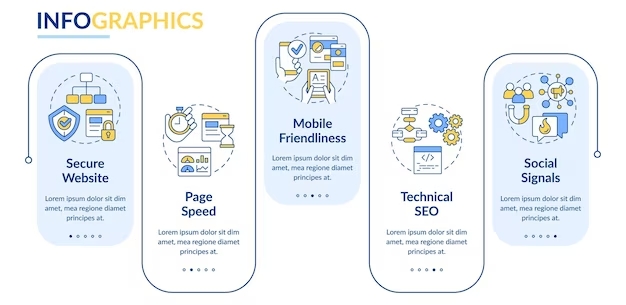
To optimize a website for search engines, it's essential to understand the ranking factors that search engines use to determine the relevance and authority of a website.
Some of the most important ranking factors are:
• Content Relevance and Quality
Search engines analyze the content of a website to determine its relevance to a user's search query.
Content that is well-written, relevant, and informative is more likely to rank higher in search engine results.
Consider also that while quality and relevance are important factors for content, search engines also look for depth and originality.
Websites that have unique and in-depth content that provides valuable insights and information to users are more likely to rank higher.
• Backlinks
Backlinks are links from other websites that point to your website.
The number and quality of backlinks are important ranking factors, as they indicate the authority and popularity of your website.
Not all backlinks are created equal.
There are two types of backlinks: do-follow and no-follow.
Do-follow links are the ones that pass authority from the linking website to the linked website.
While no-follow links do not.
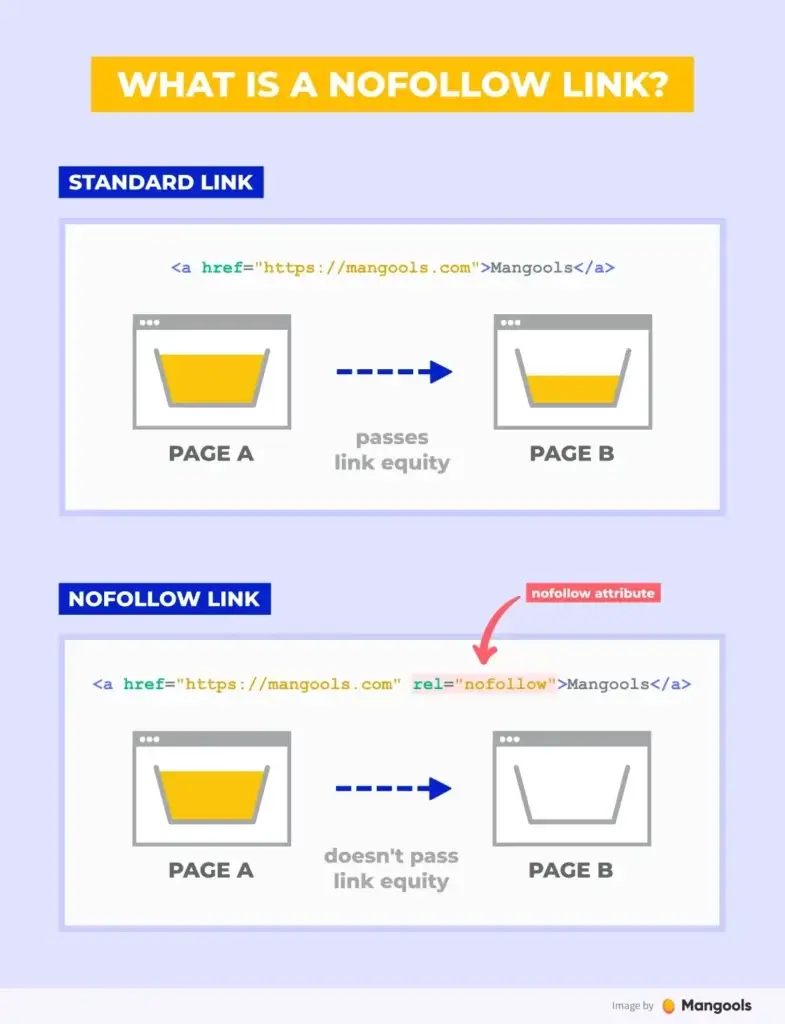
Search engines consider do-follow links as more valuable because they indicate that other websites consider the linked website as an authority on a particular topic.
Search engines prefer natural backlinks that are earned organically as a result of high-quality content and website authority.
Artificial backlinks, such as those obtained through
- link schemes
- paid links
are considered spammy and can result in penalties or even a complete removal from search engine results pages.
The anchor text is the text used to create a hyperlink to another webpage or website.
Search engines use anchor text to understand the context and topic of the linked page.
However, overuse of exact-match anchor text (using the same keyword or phrase repeatedly) can be seen as manipulative and can result in penalties.
While the number of backlinks is important, the number of unique linking domains is even more important.
Having multiple backlinks from the same website doesn't provide as much value as having backlinks from multiple unique websites.
A high number of backlinks from a single domain can also be a red flag for search engines and may indicate manipulative tactics.
Generally speaking, it is more rewarding to focus on quality over quantity.
One high-quality backlink from an authoritative website is more valuable than multiple low-quality backlinks from spammy websites.
Building high-quality backlinks is a time-consuming process that requires a lot of effort and dedication.
Some effective strategies for building backlinks include:
- creating high-quality content that naturally attracts links
- guest posting on other relevant websites
- and participating in online communities and forums in your niche
• User Experience
Search engines analyze user behavior on a website to determine its usability and user experience.
Websites that provide a positive user experience, such as:
- fast page load times
- easy navigation
- and mobile responsiveness
are more likely to rank higher in search engine results.
Keep an eye on the bounce rate.
It's the percentage of visitors who leave a website after viewing only one page.
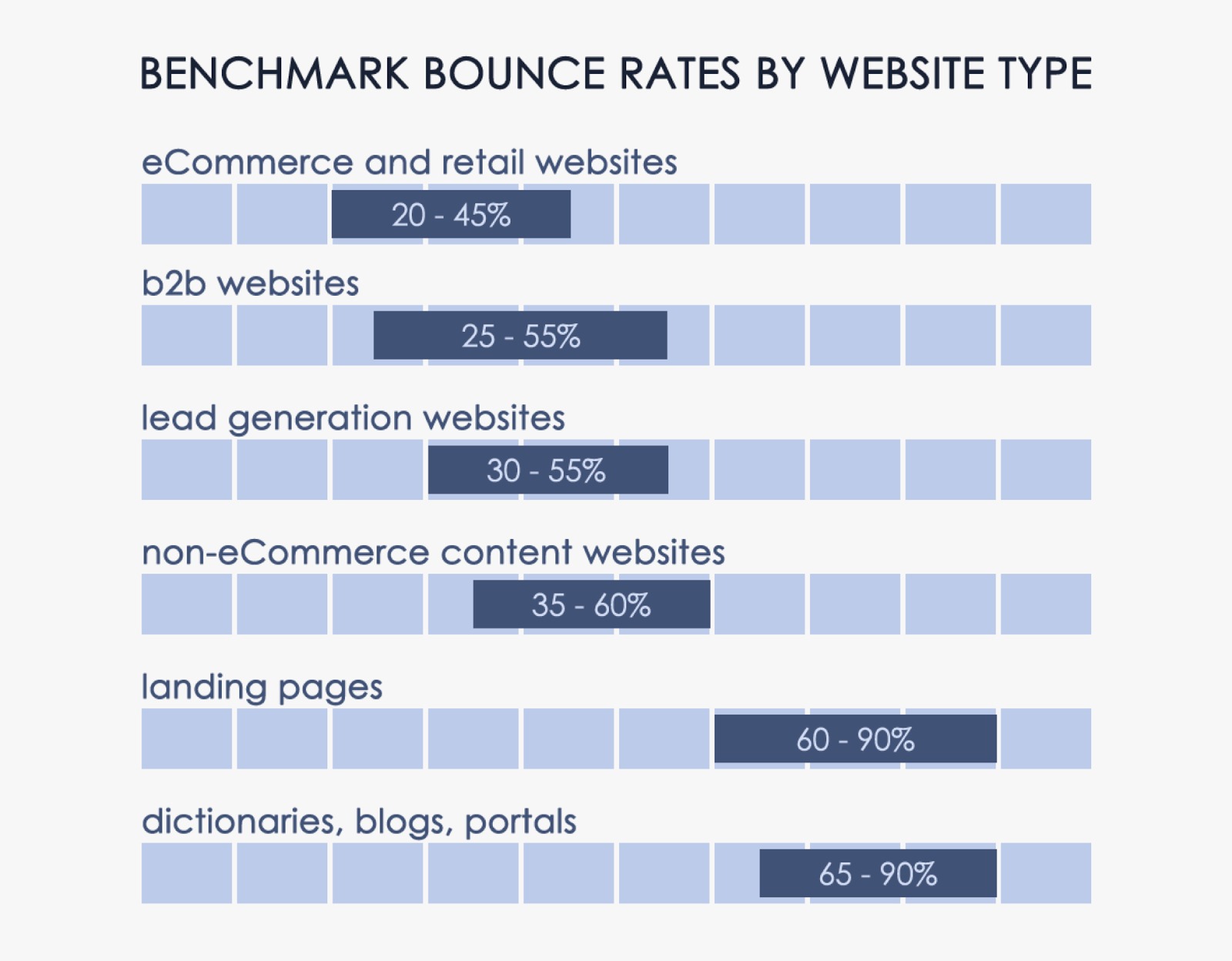
A high bounce rate can be an indication that visitors are not finding what they are looking for or are having a negative user experience.
Search engines may interpret a high bounce rate as a signal that a website is not providing valuable content or is difficult to navigate, which can negatively impact its ranking.
The dwell time is also an important factor.
It is the amount of time that a user spends on a website before returning to the search results page.
Search engines use dwell time to measure the user's satisfaction with the website's content and user experience.
Websites with a high dwell time are seen as more valuable and relevant to the user's search query, and therefore, more likely to rank higher in search results.
The way content is presented on a website can also impact its user experience.
Well-formatted content, such as:
- headings
- subheadings
- and bullet points
makes it easier for users to scan and read, leading to longer dwell times and lower bounce rates.
• Page Title and Meta Description
The page title and meta description are important factors that search engines use to determine the relevance of a page to a user's search query.
These elements should be descriptive, accurate, and include relevant keywords.
The page title is one of the most important on-page SEO elements, as it is the first thing that users see in search engine results.
A well-crafted page title should accurately describe the content of the page and include relevant keywords that users might use in their search queries.
Additionally, search engines often display the page title as the headline in search engine results, so it's important to make it attention-grabbing and compelling.
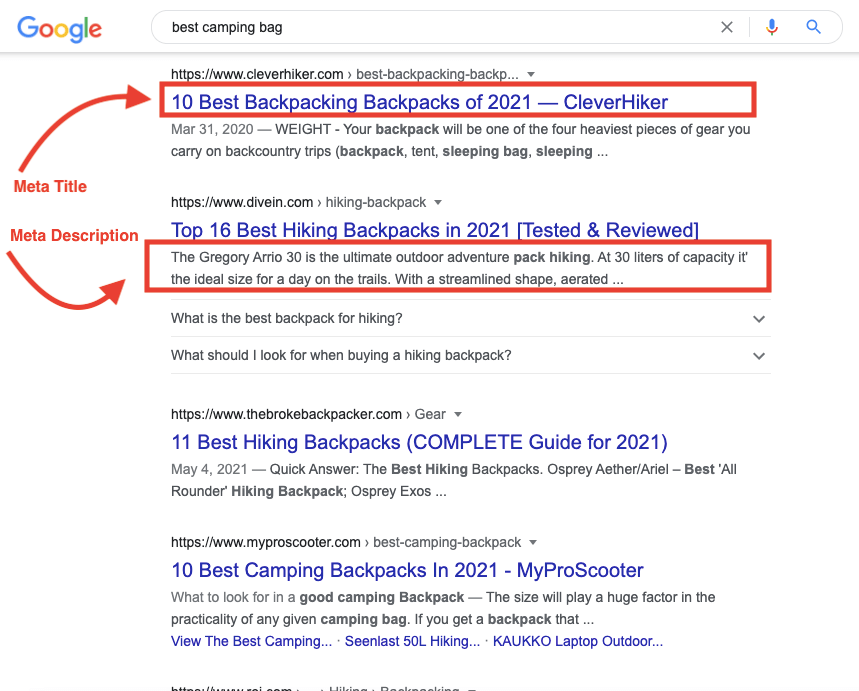
The meta description is a brief summary of the content of a web page that appears underneath the page title in search engine results.
While meta descriptions do not directly affect search engine rankings, they do play a crucial role in getting users to click through to a website.
A well-crafted meta description should be informative, compelling, and include relevant keywords to help users understand what the page is about and why it's relevant to their search query.
Additionally, search engines may bold the keywords in the meta description that match the user's search query, which can make the listing stand out in search engine results.
While there is no strict character limit for page titles and meta descriptions, it is generally recommended to keep them under a certain length.
It's best to keep meta titles under
60 characters
While meta descriptions should be under
155 characters
This helps ensure that the entire title and description can be displayed in search engine results without being truncated.
It is important to make sure that each page on a website has a unique page title and meta description.
This helps avoid duplicate content issues and also ensures that search engines can accurately identify the content of each page.
Additionally, a unique and descriptive page title and meta description can help increase click-through rates from search engine results, as users will be more likely to click on a listing that accurately describes what they are looking for.
To ensure that page titles and meta descriptions are as effective as possible, it is relevant to test and optimize them over time.
This can involve experimenting with different keywords, testing different lengths, and tracking click-through rates to see which titles and descriptions are most effective at driving traffic to a website.
• Page Speed

Page speed is a crucial factor in search engine ranking.
Websites that load quickly are more likely to rank higher in search engine results.
This is because fast-loading websites provide a better user experience and are more likely to satisfy a user's search intent.
You can test any website's page speed and get valuable insights from this free Google tool.
The report will look like this:
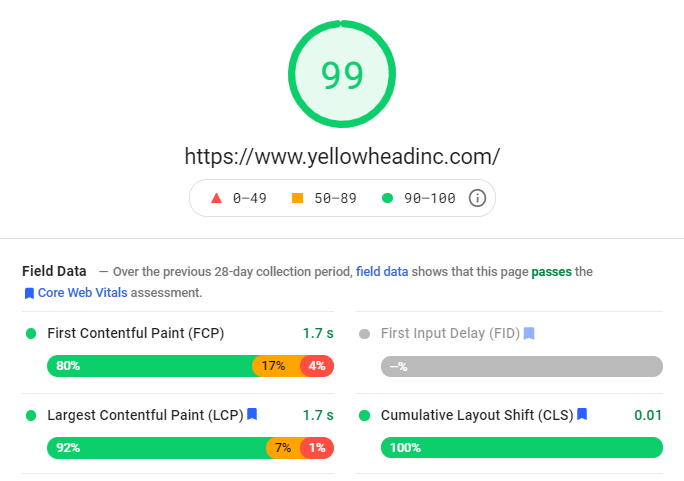
In addition to improving search engine rankings, optimizing page speed can also have other benefits for a website.
For example, a fast-loading website can lead to higher user engagement and lower bounce rates, as users are more likely to stay on a website that loads quickly.
This can result in increased conversions, whether that be through purchases, sign-ups, or other desired actions.
Several factor can impact a website's page speed.
These include:
- the size of the page
- the number of resources required to load the page
- and the quality of the website's hosting
To improve page speed, website owners can take several steps, such as:
- optimizing images
- minifying CSS and JavaScript files
- reducing the number of HTTP requests
- using a content delivery network (CDN)
Please note also that while page speed is an important factor in SEO, it is obviously not the only one.
A website with slow page speed may still rank well in SERPs if it has other strong ranking factors, such as high-quality content, backlinks from authoritative websites, and a positive user experience.
However, optimizing page speed can definitely provide a significant boost to a website's search engine rankings and overall performance.
• Social Signals
Social signals, such as:
- likes
- shares
- and comments
on social media, are also important ranking factors.

Websites with a strong social media presence and engagement are more likely to rank higher in search engine results.
Having a strong social media presence is crucial for businesses looking to improve their search engine rankings.
Social media platforms offer a valuable opportunity to engage with potential customers and drive traffic to a website.
By creating and sharing high-quality content on social media, businesses can increase their visibility and build their brand.
Search engines analyze social signals to determine the popularity and relevance of a website.
Websites that have a strong social media presence and high levels of engagement are more likely to be seen as authoritative and trustworthy by search engines, which can lead to higher search rankings.
• Domain age and history
The age and history of a website's domain name can also play a role in its ranking.
Older domains with a strong history of quality content and backlinks are more likely to rank higher than new or spammy domains.
The age of a domain refers to how long it has been registered and in use.
While it is not a direct ranking factor, a website's age can indirectly affect its SEO performance.
Older domains are more likely to have accumulated quality backlinks and established authority, which can improve their search engine rankings.
The history of a domain refers to its past use and reputation.
If a domain has a history of being used for spammy or low-quality content, it may have received penalties from search engines, which can negatively impact its current rankings.
On the other hand, domains with a history of high-quality content and backlinks are more likely to have established authority and rank higher in search engine results.
The domain authority (DA) is a metric that measures the strength and authority of a domain.
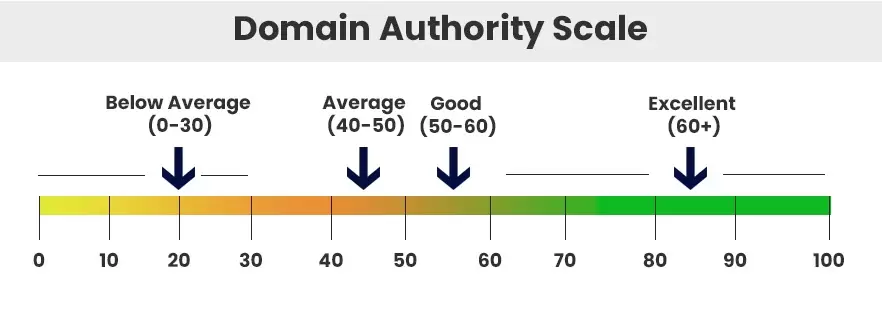
It takes into account factors such as the number and quality of backlinks, content relevance, and user engagement.
A higher domain authority indicates that the website is more trustworthy and relevant in its industry, which can lead to better search engine rankings.
• HTTPS and security
Security has become an increasingly important factor in search engine ranking in recent years.
Websites that use HTTPS (Hypertext Transfer Protocol Secure) are more likely to rank higher than those that do not.
HTTPS encrypts the connection between the website and the user's browser, which helps protect users' privacy and data.
Search engines have placed a greater emphasis on website security as cyber attacks and data breaches have become more common.
To be accurate, Google has stated that HTTPS is a lightweight ranking factor, meaning that it is one of many factors that can contribute to a website's ranking.
In addition to the potential SEO benefits, using HTTPS can also help build trust with your website visitors.
When a user sees the padlock icon in their browser's address bar, they know that their data is being transmitted securely.
To implement HTTPS on your website, you will need to obtain an SSL (Secure Sockets Layer) certificate from a trusted certificate authority.
Many web hosting providers offer SSL certificates as part of their hosting plans, or you can purchase one separately.
Once you have obtained an SSL certificate, you will need to install it on your web server and configure your website to use HTTPS instead of HTTP.
This may involve updating your website's internal links and canonical tags, as well as ensuring that any third-party resources (such as images or scripts) are also served over HTTPS.
2. Keyword Research
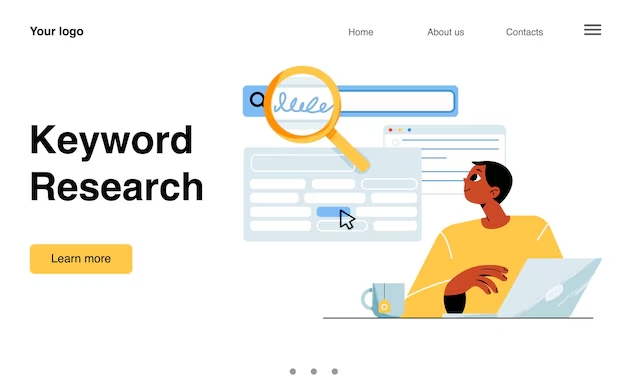
Keyword research is the process of identifying the search terms and phrases that users enter into search engines when looking for information or products.
Keyword research is essential for optimizing a website's content for search engines.
• Use Keyword Research Tools
Keyword research is the process of identifying the phrases and terms that people use when searching for information online.
This research is important for SEO because it helps you understand the language that your target audience uses and the topics they are interested in.
Once you have this information, you can optimize your website's content to include these keywords and topics, making it more likely to rank higher in search engine results.
There are many keyword research tools available.
Google Keyword Planner is probably the most popular.
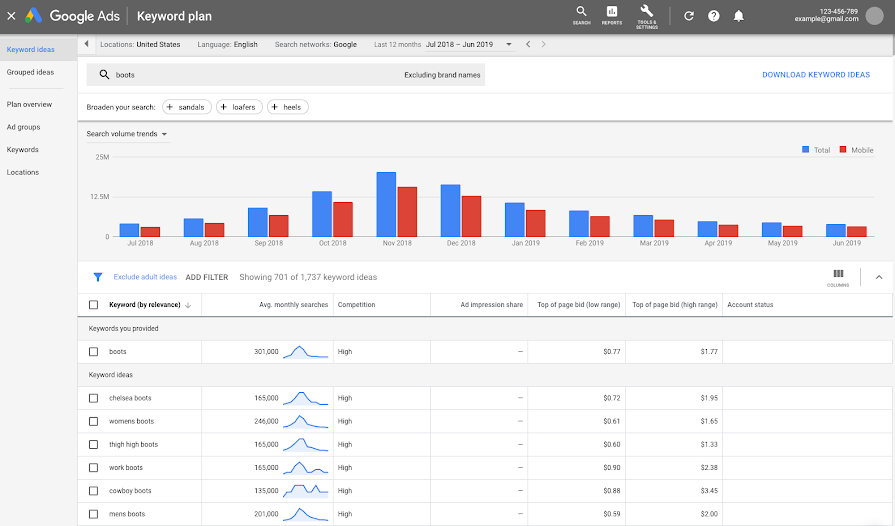
It's a free tool that provides information on
- search volume
- competition
- and relevance of keywords
This tool is especially useful because it is directly linked to Google's search data, which is the most widely used search engine.
Other popular keyword research tools include:
- Ahrefs
- SEMrush
- Moz
These tools provide more in-depth analysis of keyword data, including information on competitor websites and the top-performing pages for specific keywords.
• Identify Short-Tail and Long-Tail Keywords
When conducting keyword research, it's important to consider both short-tail and long-tail keywords.
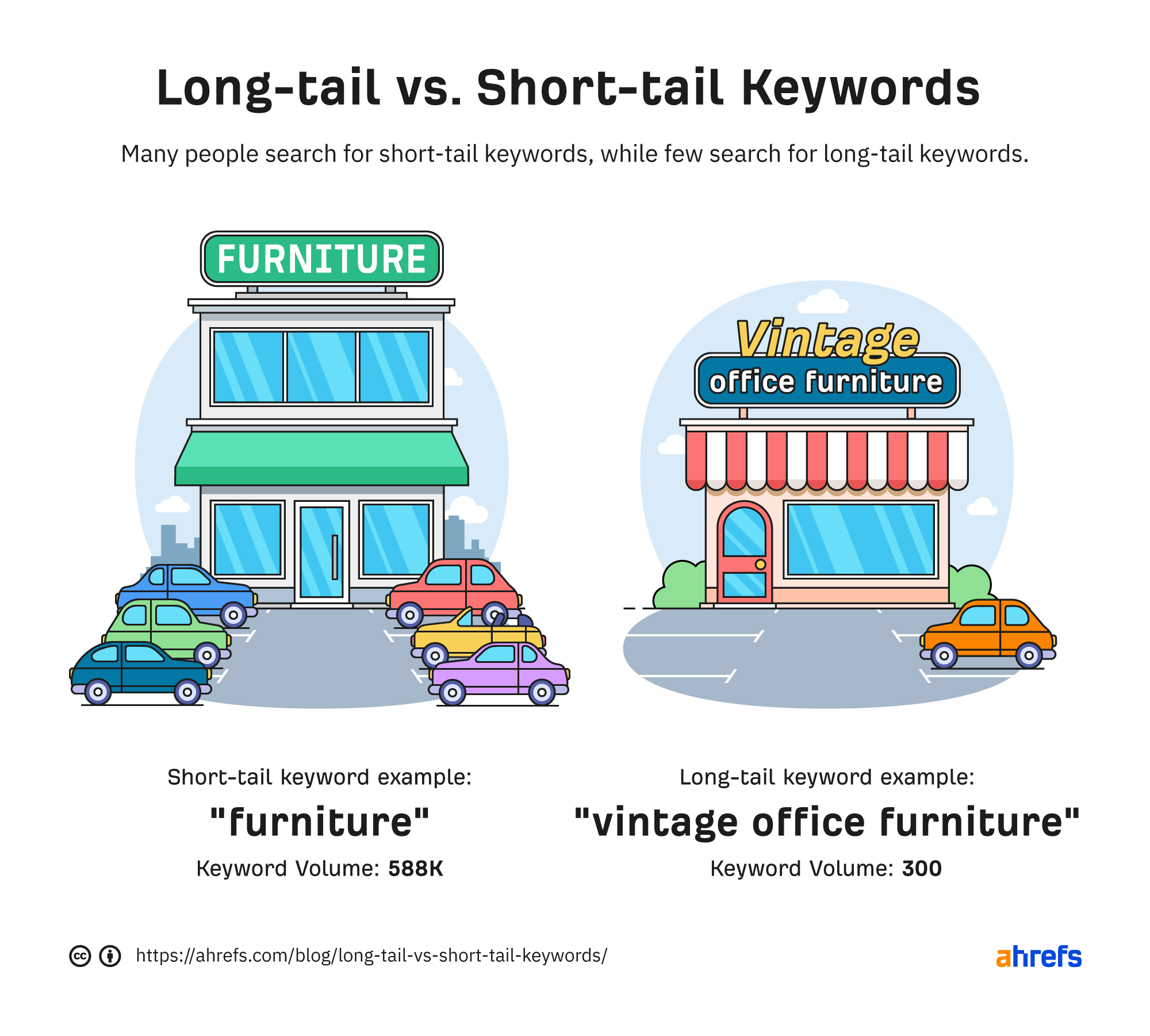
Short-tail keywords are short and general phrases, such as
SEO
digital marketing
that receive a high search volume.
However, they are also highly competitive, making it difficult to rank for these keywords.
Long-tail keywords, on the other hand, are more specific and usually longer phrases, such as
how to improve SEO for ecommerce websites
These keywords may have a lower search volume but are often less competitive, making it easier to rank for them.
• Analyze Competitor Keywords
Analyzing your competitors' keywords can provide valuable insights into the keywords and phrases that are driving traffic to their website.
It is a crucial part of any successful SEO strategy.
By understanding the keywords and phrases that your competitors are ranking for, you can identify potential opportunities for your own website.
One way to do this is by using tools like Ahrefs or SEMrush, as listed a little above.
These tools allow you to see which keywords and phrases are driving traffic to their website, as well as how they are ranking for those keywords.
By identifying your competitors' top-ranking keywords, you can get a better understanding of the search landscape and the keywords that are most important in your industry.
You can also identify gaps in your own keyword strategy and find opportunities to target new, relevant keywords.
Please note that simply copying your competitors' keywords is not a good SEO strategy.
Instead, you should use this information as a starting point for your own keyword research, and focus on identifying unique, relevant keywords that will help your website stand out.
• Consider User Intent
When choosing keywords, consider the user's intent behind the search query.
Are they looking for information, a product, or a service?
For example, if a user is searching for
best pizza restaurants near me
their intent is likely to find a local pizza restaurant to order from.
On the other hand, if a user is searching for
how to make pizza dough
their intent is to find information on how to make pizza dough at home.
When choosing keywords, consider the different types of user intent, including:
- navigational
- informational
- commercial
- transactional
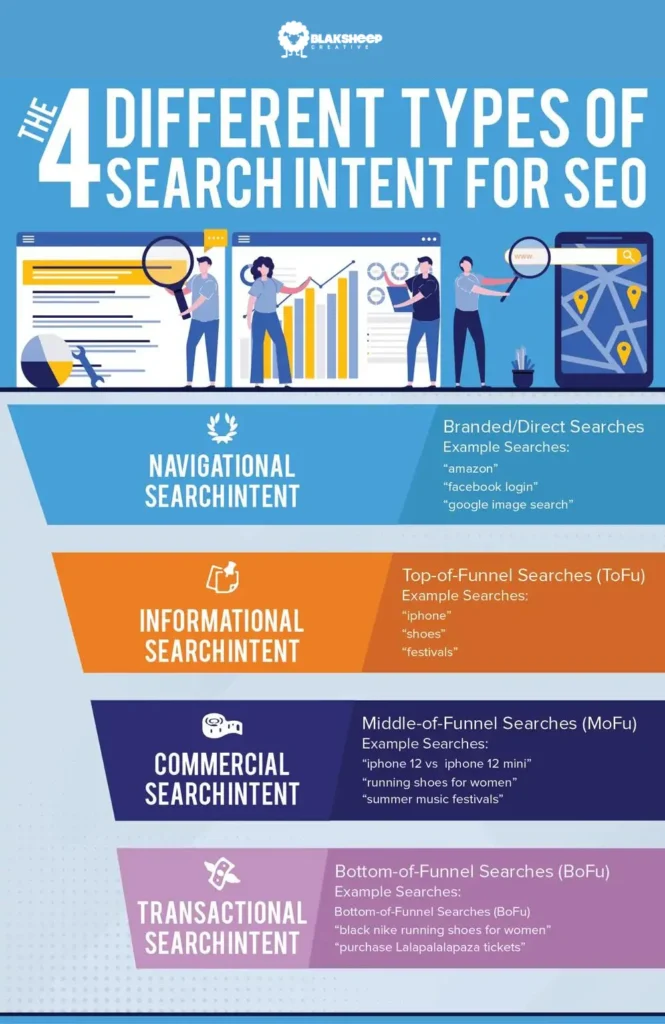
Navigational intent is when a user is searching for a specific website or brand.
Informational intent is when a user is searching for information.
Commercial intent is when a user is researching products or services with the intention of making a decision but hasn’t committed to a purchase yet.
And transactional intent is when a user is searching to make a purchase.
By understanding the user's intent behind their search query, you can choose relevant and targeted keywords that align with their needs.
This can help you attract qualified traffic to your website and increase your chances of converting those visitors into customers.
3. On-Page Optimization
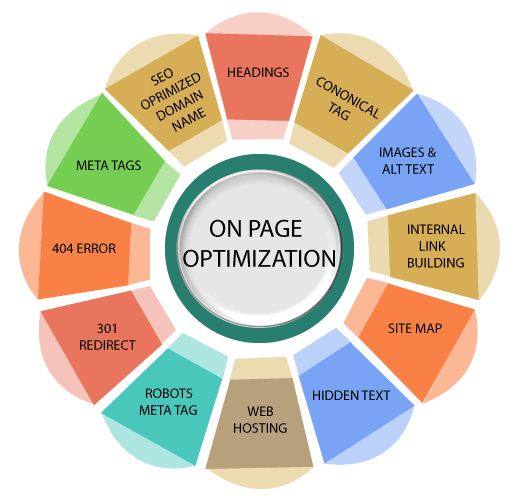
On-page optimization refers to the process of optimizing a website's content and HTML source code to improve its relevance and visibility in search engine results.
• Optimize Page Titles and Meta Descriptions
As described above in the article, the page title and meta description should accurately and concisely describe the content of the page and include relevant keywords.
• Use Heading Tags
Heading tags are HTML elements that are used to structure the content of a webpage, and they play an important role in search engine optimization.
Heading tags are used to break up the content of a webpage into different sections and give a hierarchical structure to the content.
There are six heading tags in HTML
ranging from H1 to H6
H1 being the most important
H6 being the least important
Using heading tags properly can help search engines understand the structure and hierarchy of the content on your webpage.
It can also make your content easier to read and more user-friendly.
By using heading tags, you can break up long paragraphs into smaller, more digestible sections, making it easier for users to scan and understand your content.
It's important to use heading tags in the correct order, with H1 tags used for the main title of the page and H2, H3, and so on used for subheadings and subtopics.
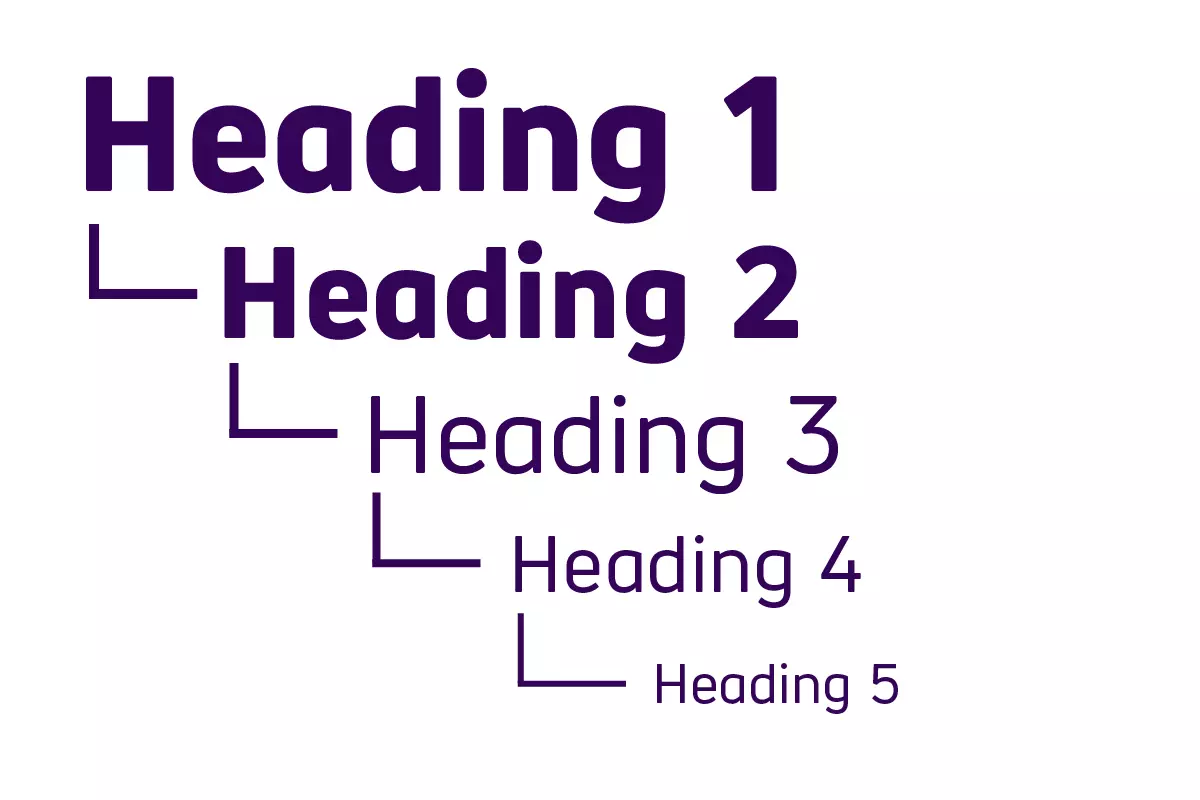
This hierarchy of headings helps search engines understand the importance of different sections of your content.
Do not forget to include your targeted keywords in your heading tags.
This can help search engines understand the relevance of your content to a user's search query and improve your chances of ranking for those keywords.
• Mobile Optimization
As mobile device usage continues to grow, it has become increasingly important for businesses to optimize their websites for mobile users.
In fact, Google has made it clear that having a mobile-friendly website is a must-have for ranking well in their search results.
This means that having a responsive website design that adapts to different screen sizes is essential.

A responsive website design ensures that your website looks and functions properly on any device, from smartphones to tablets and even desktop computers.
Mobile optimization goes beyond just having a responsive website design, however.
You also need to ensure that your website's content is easy to read and navigate on smaller screens.
This means using
- larger fonts
- shorter paragraphs
- and clear calls-to-action
In addition to optimizing your website for mobile devices, you can also consider developing a mobile app for your business.
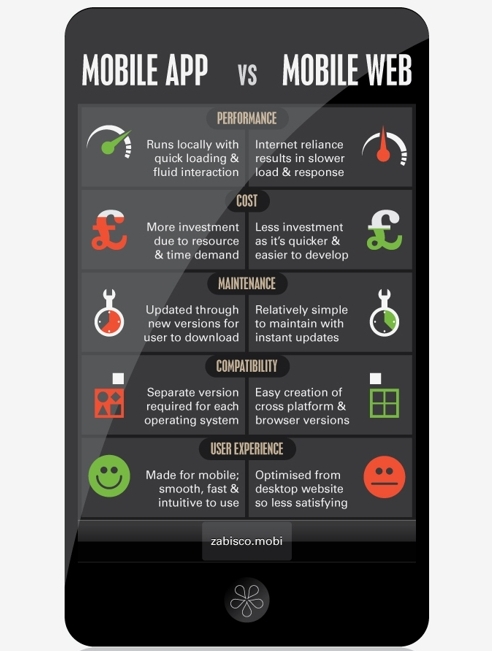
A mobile app can provide a more streamlined and user-friendly experience for mobile users, while also offering additional functionality and features.
• Internal Linking
Internal linking is an important aspect of on-page SEO that can help improve the visibility of your website in search engine results pages (SERPs).
By linking to other pages on your website, you are essentially guiding both search engine crawlers and website visitors through your website's content structure.
One of the main benefits of internal linking is that it helps search engines understand the relationships between the various pages on your website.
This can improve the crawlability of your website, and also help to establish a hierarchy of pages based on their importance and relevance.
When creating internal links, use descriptive anchor text that accurately reflects the content of the linked page.
This helps search engines understand the context of the linked page and provides additional information to website visitors about what they can expect to find on the linked page.
In addition to improving your website's crawlability and content structure, internal linking can also help to distribute page authority and improve the overall user experience.
By providing users with easy access to related content, you can encourage them to spend more time on your website and reduce bounce rates.
• Schema Markup
Schema markup is a powerful tool that can help websites provide additional context to search engines about their content.
It's a type of structured data markup language that enables websites to highlight specific information such as
- products
- events
- reviews
- and more
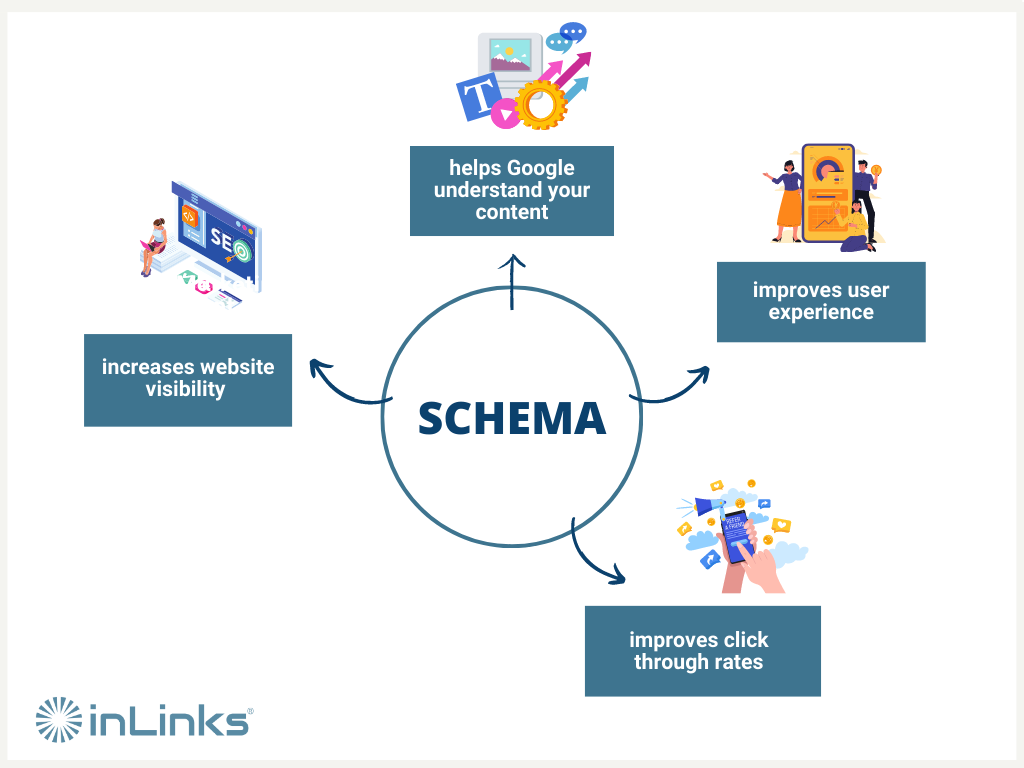
By adding schema markup to a website's content, search engines can better understand what the website is about, and as a result, display more relevant information to users in search engine results.
Schema markup can also improve a website's appearance in search engine results by displaying rich snippets, such as star ratings, reviews, and images :
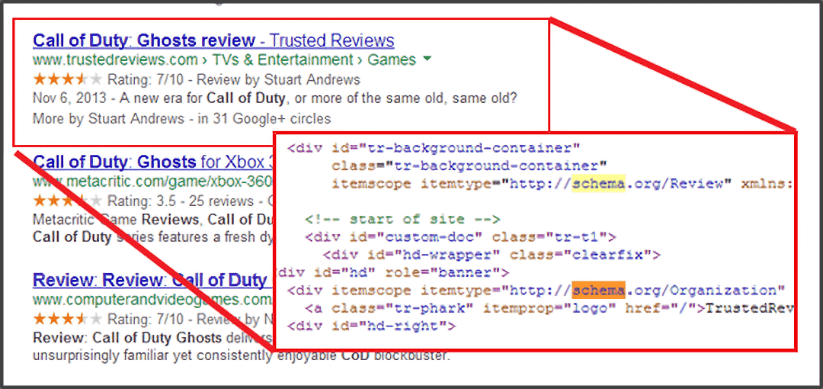
This can help increase the click-through rate of a website's search engine listing by providing more context and information to users.
Implementing schema markup on a website requires some technical knowledge, but there are tools available that can help simplify the process.
Google's Structured Data Markup Helper is a free tool that can assist with adding schema markup to a website's content.
Additionally, some website platforms, such as WordPress, have plugins available that can automatically add schema markup to a website's content.
4. Technical SEO

Technical SEO refers to the process of optimizing a website's technical elements to improve its visibility and ranking in search engine results.
• Site Architecture
An easy-to-navigate website architecture is crucial for both users and search engines.
Users want to find the information they are looking for quickly and easily, while search engines need to be able to crawl and index your site efficiently.
To achieve an effective website architecture, you should start by organizing your pages into a logical hierarchy, with your most important pages at the top.

This might mean creating a main navigation menu that links to your key pages, and then breaking down those pages into subpages that are linked to from the main pages.
Ensure also that each page on your website is linked to from other relevant pages.
To make your website even more accessible to users and search engines, consider adding a search bar to your site.
When you don't want a page to be indexed by the search engine, you can include the no-index tag in your page.
All this can make it easier for users to find specific content and can help search engines crawl and index your site more effectively.
• URL Structure
You should make sure that your website's URL structure is logical and easy to understand.
Use descriptive, keyword-rich URLs that accurately reflect the content of each page, and avoid using generic or ambiguous URLs that do not provide any context.
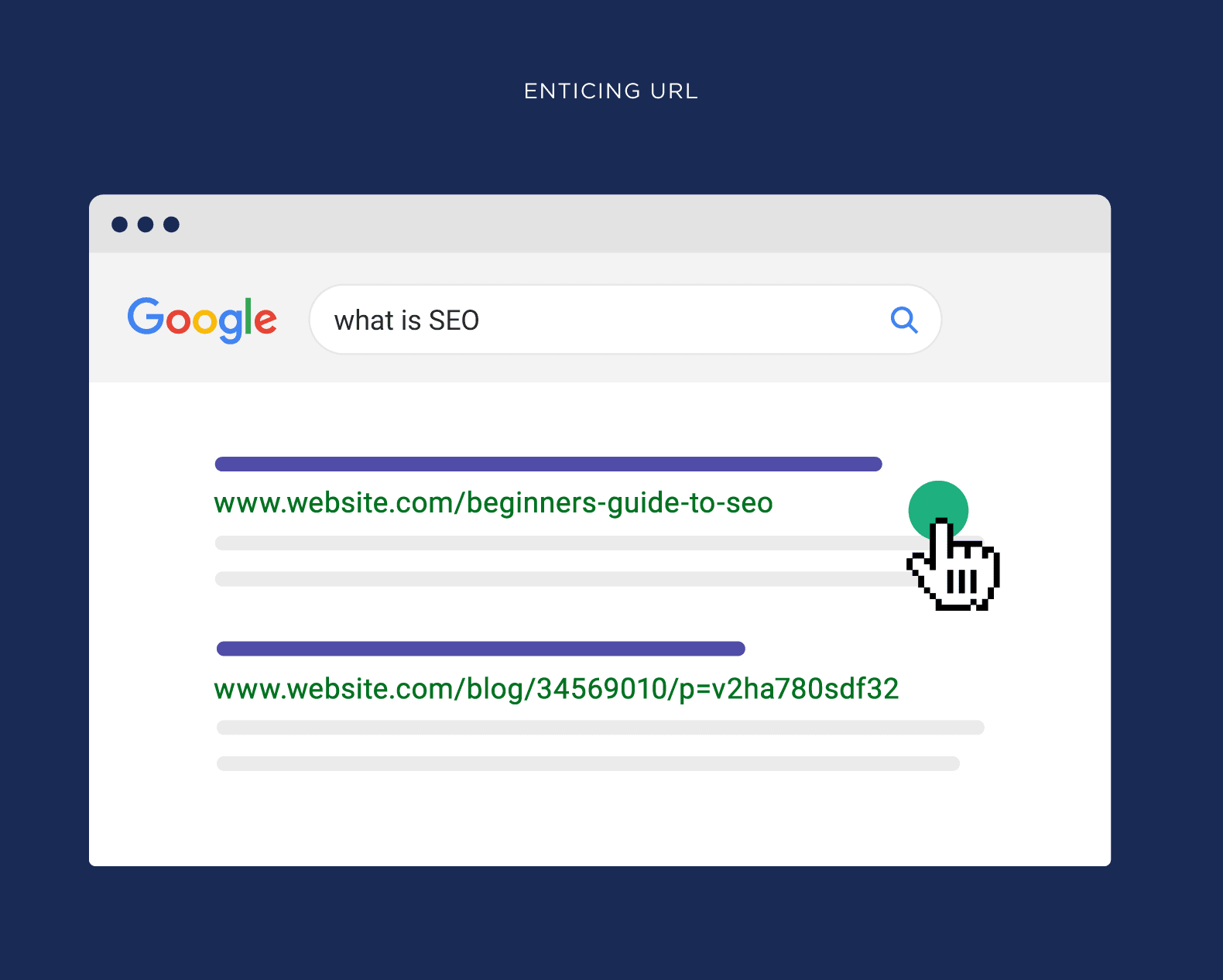
Avoid using dynamic URLs with long strings of characters and symbols.
• XML Sitemap
An XML sitemap is a vital component of website optimization, especially for large websites or those with complex structures.
This file provides search engines with a clear map of all the pages on your website, allowing them to understand its structure and hierarchy.
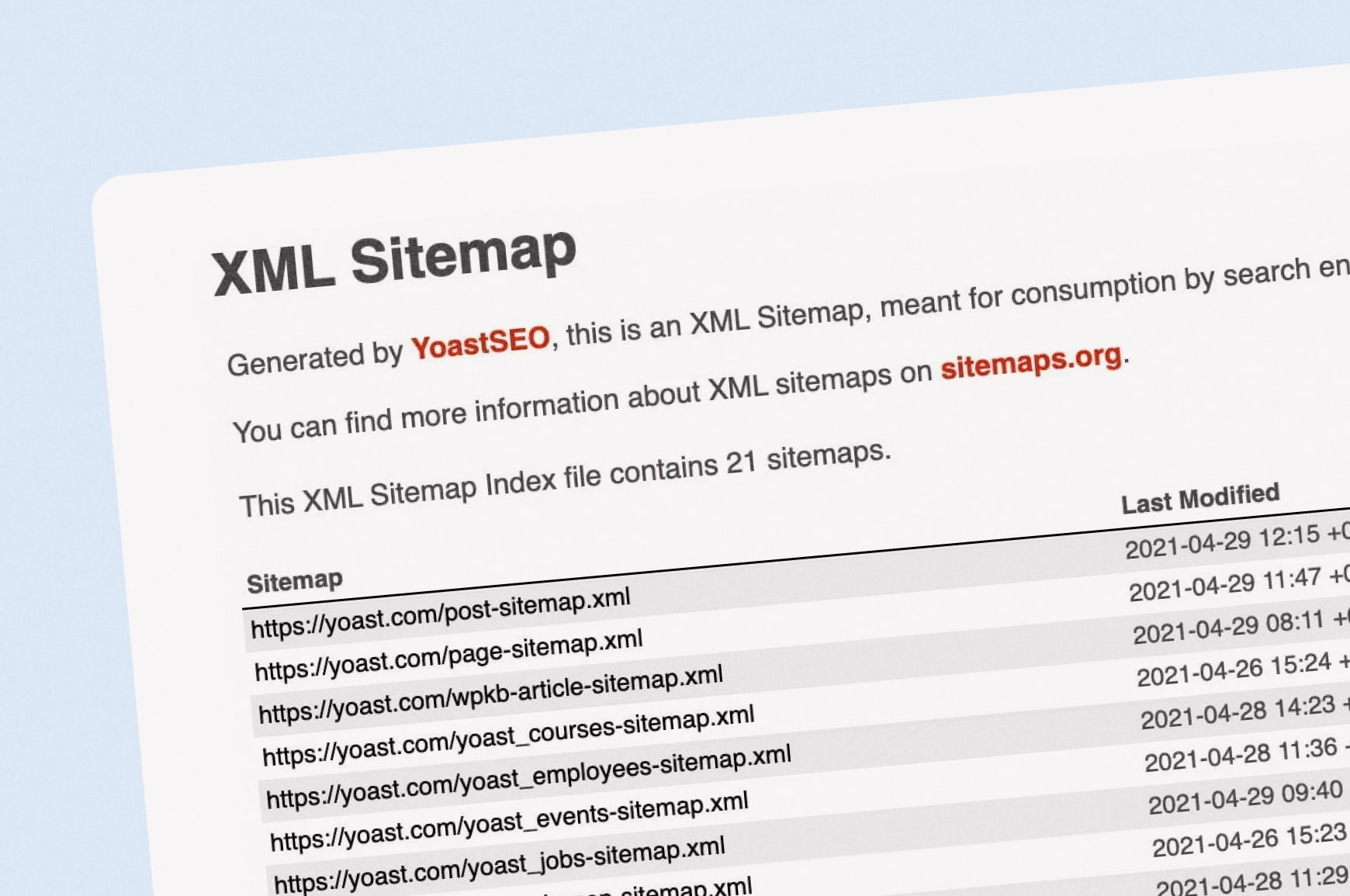
By including all the pages on your website in the XML sitemap, you can ensure that they are all crawled and indexed by search engines.
To create an XML sitemap, you can use a tool like:
- Screaming Frog
- Google Search Console
Once you have created your sitemap, you can submit it to search engines through their respective Google Search Console Tools (formerly Webmaster Tools).
This will ensure that search engines are aware of all the pages on your website and can crawl and index them efficiently.
• Robots.txt
A robots.txt file instructs search engine crawlers on which pages of your website to crawl and index.
Ensure that your robots.txt file is correctly configured to prevent crawlers from accessing irrelevant or sensitive pages.
Errors in its configuration can lead to your website being improperly indexed or not indexed at all.
For example, if you accidentally block crawlers from accessing important pages, they will not be able to appear in search engine results.
To avoid these issues, understand the syntax and structure of the robots.txt file.
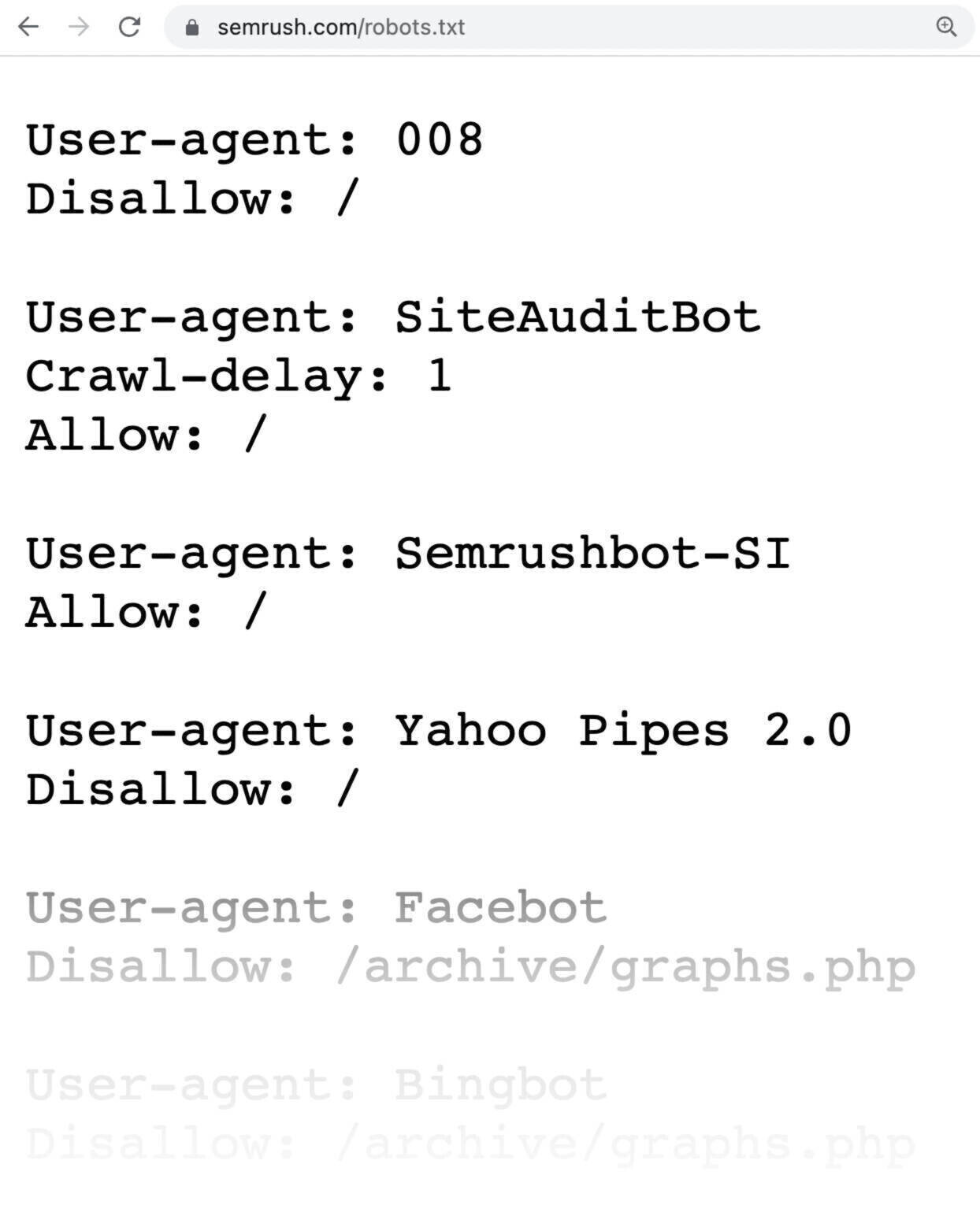
Make sure to test your file using tools like the Google Search Console's robots.txt Tester to ensure that your instructions are being correctly interpreted by search engine crawlers.
5. Link Building
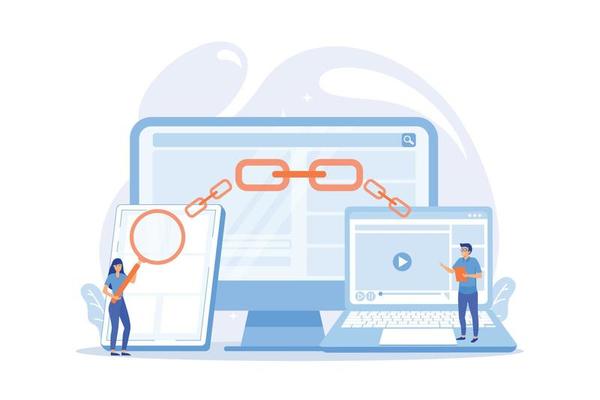
Link building is the process of acquiring backlinks from other websites to improve your website's authority and ranking in search engine results.
Here are some link building tips:
• Guest Blogging
Guest blogging—or guest posting—involves writing and publishing content on other websites that link back to your website.
Identify high-authority websites in your niche and pitch guest blogging ideas to their editors.
Check out our guest posting opportunity on Kontactr by clicking on the image below (opens a new window):

• Broken Link Building
Broken link building involves identifying broken links on other websites and offering to replace them with a link to your content.
Use tools like Ahrefs or SEMrush to identify broken links in your niche.
• Skyscraper Technique
The skyscraper technique involves identifying popular content in your niche and creating better, more comprehensive versions of that content.
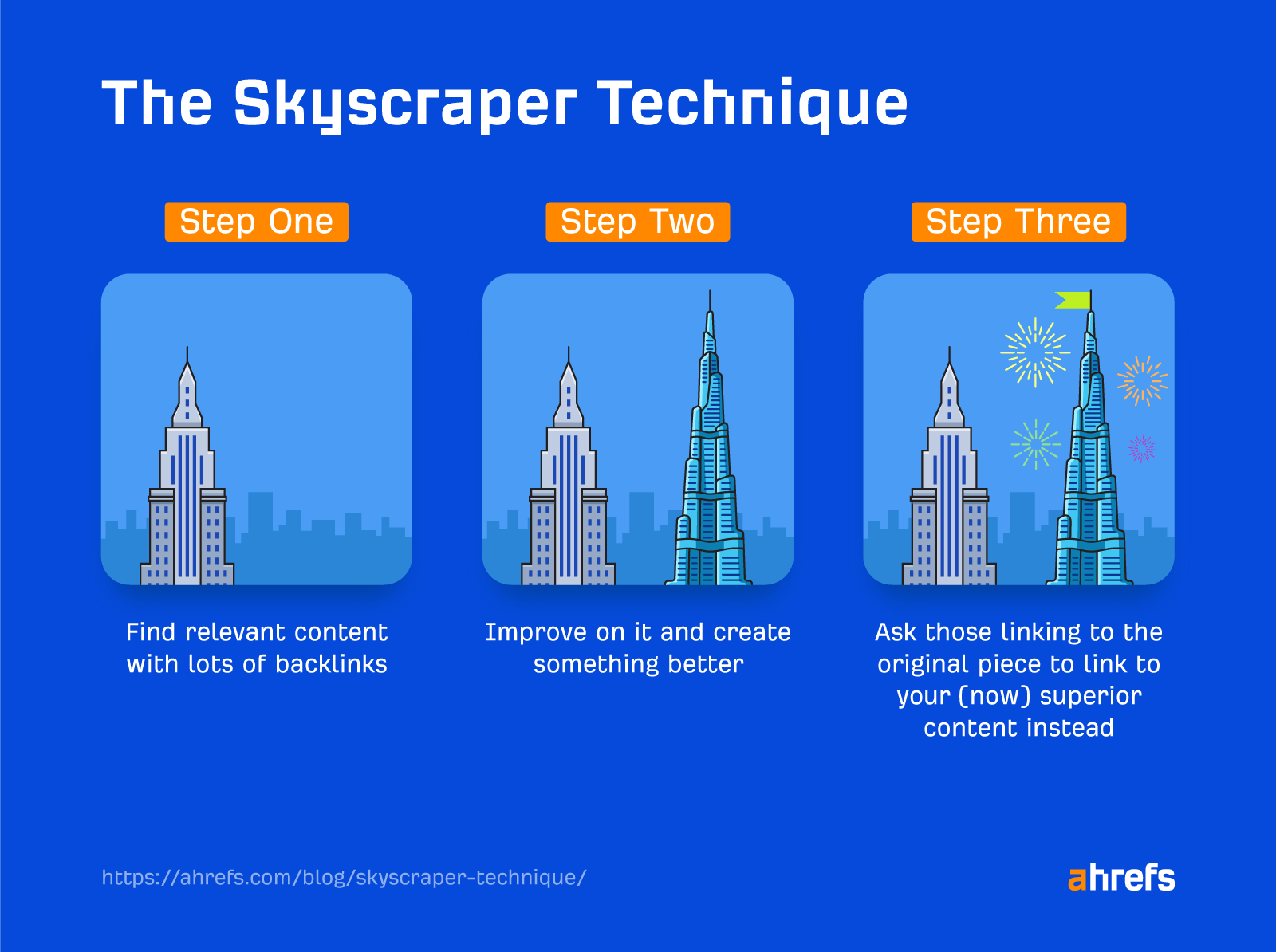
Reach out to websites that have linked to the original content and offer them your improved version.
• Social Media Promotion
Promote your content on social media platforms to increase its visibility and attract backlinks.
Publish your content on social media channels and engage with users to encourage shares and likes.
6. Content Marketing

Content marketing involves creating and distributing valuable and relevant content to attract and retain a targeted audience and drive profitable customer action.
• Content Strategy
Develop a content strategy that aligns with your business goals and audience's interests.
Use a variety of content formats, such as:
- blog posts
- videos
- infographics
to attract and engage your audience.
• Create Quality Content
Creating high-quality, relevant, and informative content is essential for attracting and retaining your target audience. Use keyword research to identify relevant topics and create content that provides value to your audience.
• Content Promotion
Promote your content through various channels, such as:
- social media
- email marketing
- and influencer outreach
Use paid advertising, such as Google Ads and Facebook Ads, to drive more traffic to your content.
• Content Repurposing
Repurpose your existing content into different formats to reach a wider audience. For example, you can turn a blog post into a video or infographic.
• Blogging
Blogging is a great way to create and share content on your website.
Regularly publishing blog posts can attract and retain visitors, establish your brand as an authority in your niche, and improve your website's search engine ranking.
• Infographics and Visual Content
Infographics and visual content are highly shareable and can attract backlinks and social media engagement.
Here is great example:

Use tools like Canva or Piktochart to create eye-catching and informative visual content.
• Video Marketing
Video marketing is a highly engaging and shareable content format.
Use platforms like YouTube or Vimeo to create and share informative and engaging video content.
Keeping yourself in tune with the last digital marketing trends is always a good approach to anticipate, be ahead of your competitors, and take the right strategic decisions at the right time.
7. Local SEO

Local SEO is the process of optimizing a website and its content to improve its visibility and ranking in local search results.
• Google My Business

Creating and optimizing your Google My Business listing is essential for local SEO. Ensure that your listing includes accurate and up-to-date information about your business, including your
- address
- phone number
- and business hours
• Local Citations
Local citations are mentions of your business on other websites, such as local directories or review sites. Ensure that your business's name, address, and phone number (NAP) are consistent across all local citations.
• Local Keywords
Optimize your website's content with local keywords to improve its visibility in local search results. Use location-specific keywords in your website's meta tags, headings, and content.
• Local Link Building
Acquiring backlinks from local websites can improve your website's authority and ranking in local search results. Reach out to local bloggers, news outlets, or business associations to pitch guest blogging ideas or request backlinks.
8. International SEO

International SEO is a strategy that focuses on optimizing your website for search engines in different countries and languages.
Here are some key strategies for international SEO:
- Conduct keyword research for each target market to identify relevant and high-traffic keywords.
- Use hreflang tags to indicate to search engines which language and country versions of your website should be displayed to users.
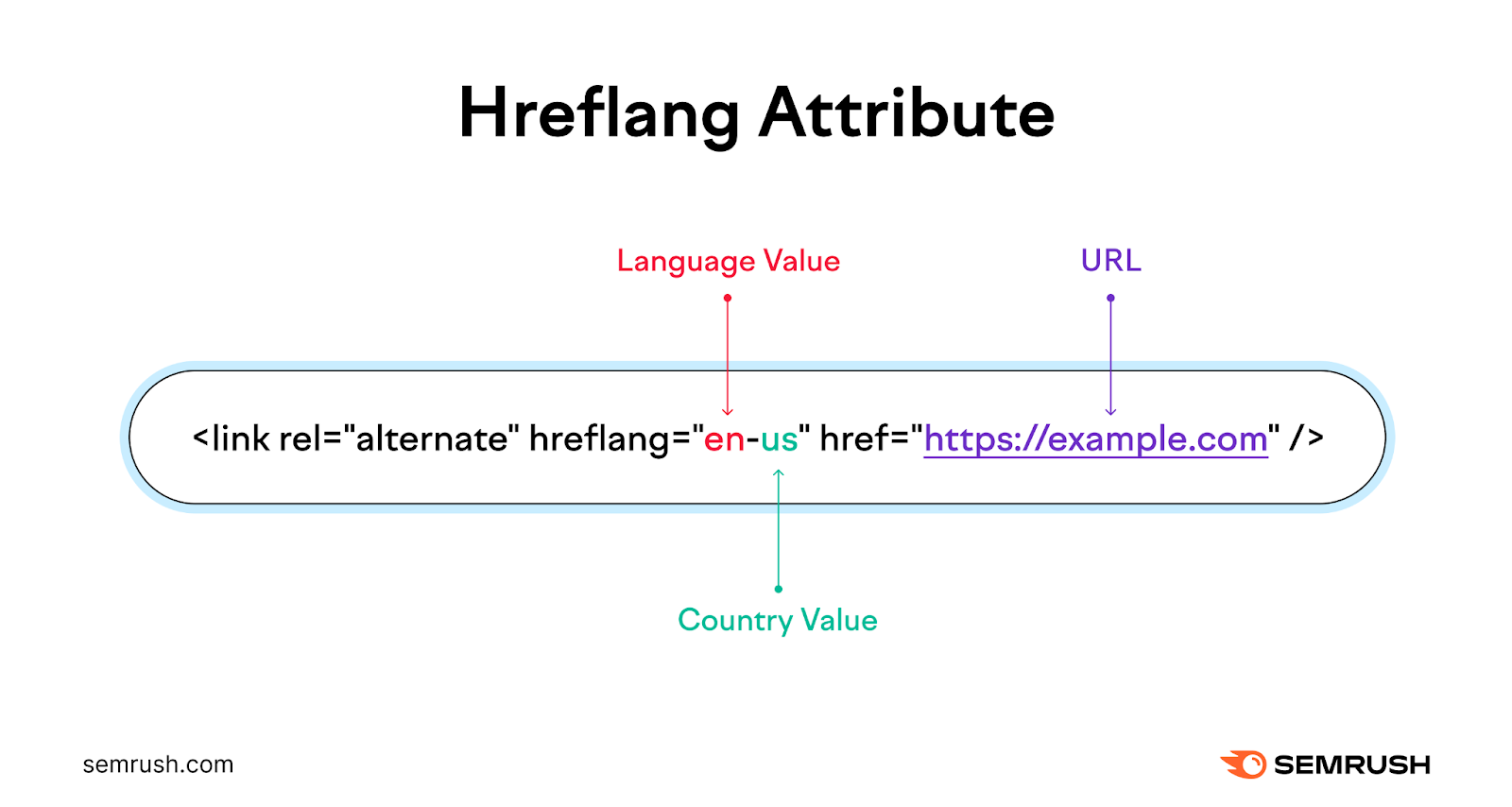
- Optimize your website's URL structure and content for each target market.
- Build high-quality backlinks from local websites and directories in each target market.
- Consider using a Content Delivery Network (CDN) to improve website performance and loading times in different regions.
9. Analytics and Tracking

Analytics and tracking tools allow you to:
- measure your website's performance
- track user behavior
- and identify areas for improvement
• Google Analytics
Google Analytics is a free web analytics tool that allows you to track your website's traffic, user behavior, and conversions. Use Google Analytics to identify areas for improvement and track the impact of your SEO efforts.
• Search Console
Google Search Console is a free tool that allows you to monitor your website's presence in Google search results. Use Search Console to:
- identify indexing and crawling issues
- monitor your website's search performance
- and identify opportunities for improvement
• Heatmaps and Click Tracking
Heatmaps and click tracking tools allow you to track user behavior on your website, identify areas of high engagement, and improve your website's user experience.
See the areas most frequently hovered over and clicked on in the screenshot below:

Use heatmaps and click tracking tools such as Sprig, Fullstory, Mouseflow, Smartlook or Hotjar.
• Conversion Tracking
Conversion tracking tools allow you to track user behavior and conversions on your website. Use conversion tracking to identify areas for improvement in your website's user experience and conversion funnel.
Here are the top 10 conversion tracking tools I could come up with:
- Ruler Analytics
- Adinton
- Adjust
- Adobe Analytics
- Funnel.io
- Heap
- KissMetrics
- Matomo
- Mixpanel
- Scaleo
10. SEO Tools

There are numerous SEO tools available that can help you analyze your website's performance, identify areas for improvement, and track your competitors.
Ahrefs
Ahrefs is a comprehensive SEO tool that provides keyword research, backlink analysis, and competitor analysis. Use Ahrefs to analyze your website's backlinks, identify link building opportunities, and track your keyword rankings.
SEMrush
SEMrush is an all-in-one marketing tool that provides SEO, PPC, and content marketing features. Use SEMrush to conduct keyword research, track your rankings, and analyze your competitors' SEO strategies.
Moz Pro
Moz Pro is an SEO software suite that provides keyword research, site audits, and backlink analysis. Use Moz Pro to optimize your website's on-page and off-page SEO, track your keyword rankings, and monitor your website's health.
Kontactr Site Analyzer
Kontactr provides a SEO Site Analyzer for domains and subdomains. It allows you to improve your search engine performance.
The tool examine your website in seconds to give you SEO insights and enhancement opportunities.
The key points of the generated SEO Report are:
- SSL certificate details
- Meta data
- URL resolve and parameters
- Robots.txt
- Semantic analysis
- Page speed
- Traffic
- Layout on desktop and mobile devices
- Internal and external links
- Social networks presence
- And much more
11. Summary of SEO Best Practices
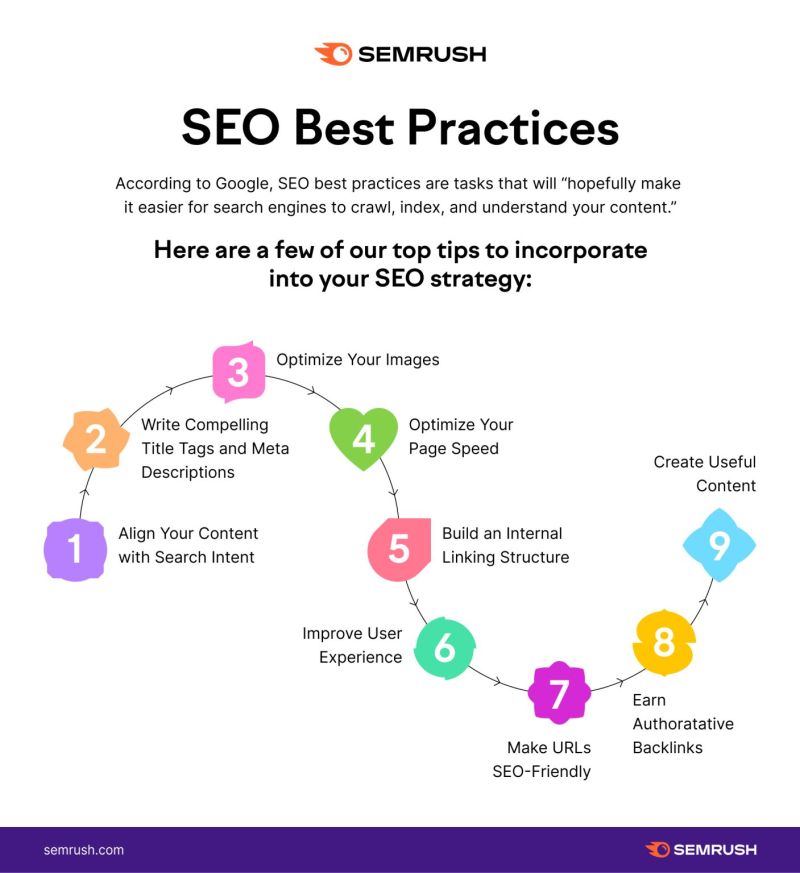
Here is a summary of the best practices to keep in mind when optimizing your website and take with you after reading this article:
• User Experience
Focus on providing a good user experience for your website visitors. Ensure that your website is easy to navigate, loads quickly, and is mobile-friendly.
• Quality Content
Create high-quality and valuable content that adds value to your audience. Use a variety of content formats, such as blog posts, videos, and infographics, to attract and engage your audience.
• Keyword Research
Conduct keyword research to identify relevant and high-traffic keywords for your website. Use keyword research tools like Google Keyword Planner or Ahrefs to find keywords relevant to your business.
• On-page Optimization
Optimize your website's on-page elements, such as page titles, meta descriptions, headers, and content, to improve your website's relevance and visibility in search results.
• Link Building
Acquire high-quality backlinks from relevant and authoritative websites to improve your website's authority and ranking in search results.
• Analytics
Monitor your website's performance using web analytics tools like Google Analytics or SEMrush. Use this data to identify areas for improvement and track the effectiveness of your SEO strategies.
Conclusion
Search engine optimization is a complex and ever-evolving field.
By following these SEO tips and best practices, you can improve your website's visibility and ranking in search engine results, attract more traffic and leads, and ultimately grow your business.
Remember to stay up-to-date with the latest SEO trends and techniques and continue to experiment and refine your SEO strategy over time.
Good luck!

Additional external resources to consider:
- Google's SEO Starter Guide
- Moz's Beginner's Guide to SEO
- Backlinko's Blog
- Neil Patel's Blog
 Access Request Form
Access Request Form
 Afterparty RSVP Form
Afterparty RSVP Form
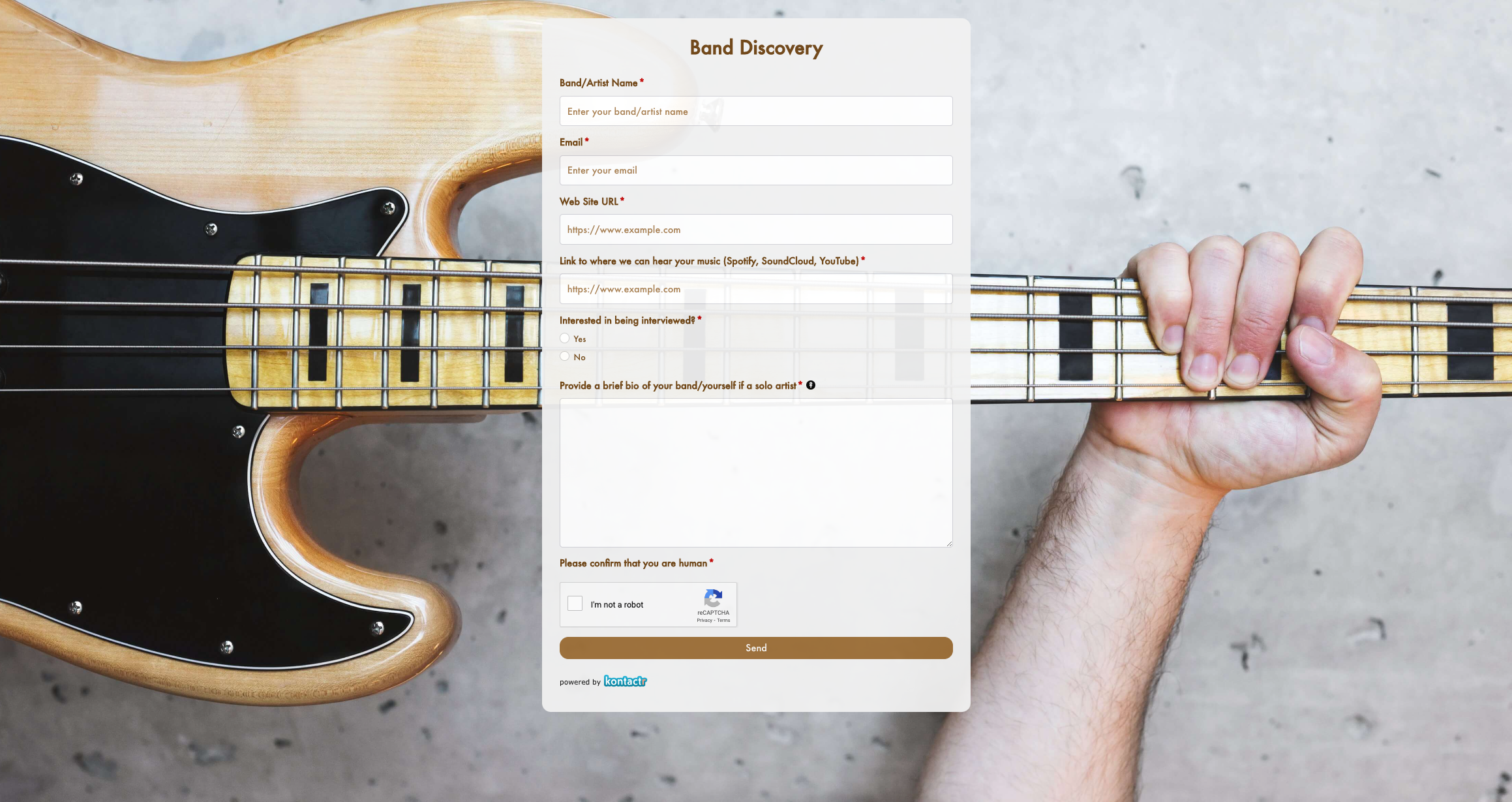 Band Discovery Form
Band Discovery Form
 Book a room Form
Book a room Form
 Booking Enquiries Form
Booking Enquiries Form
 Brochure Mailing Form
Brochure Mailing Form
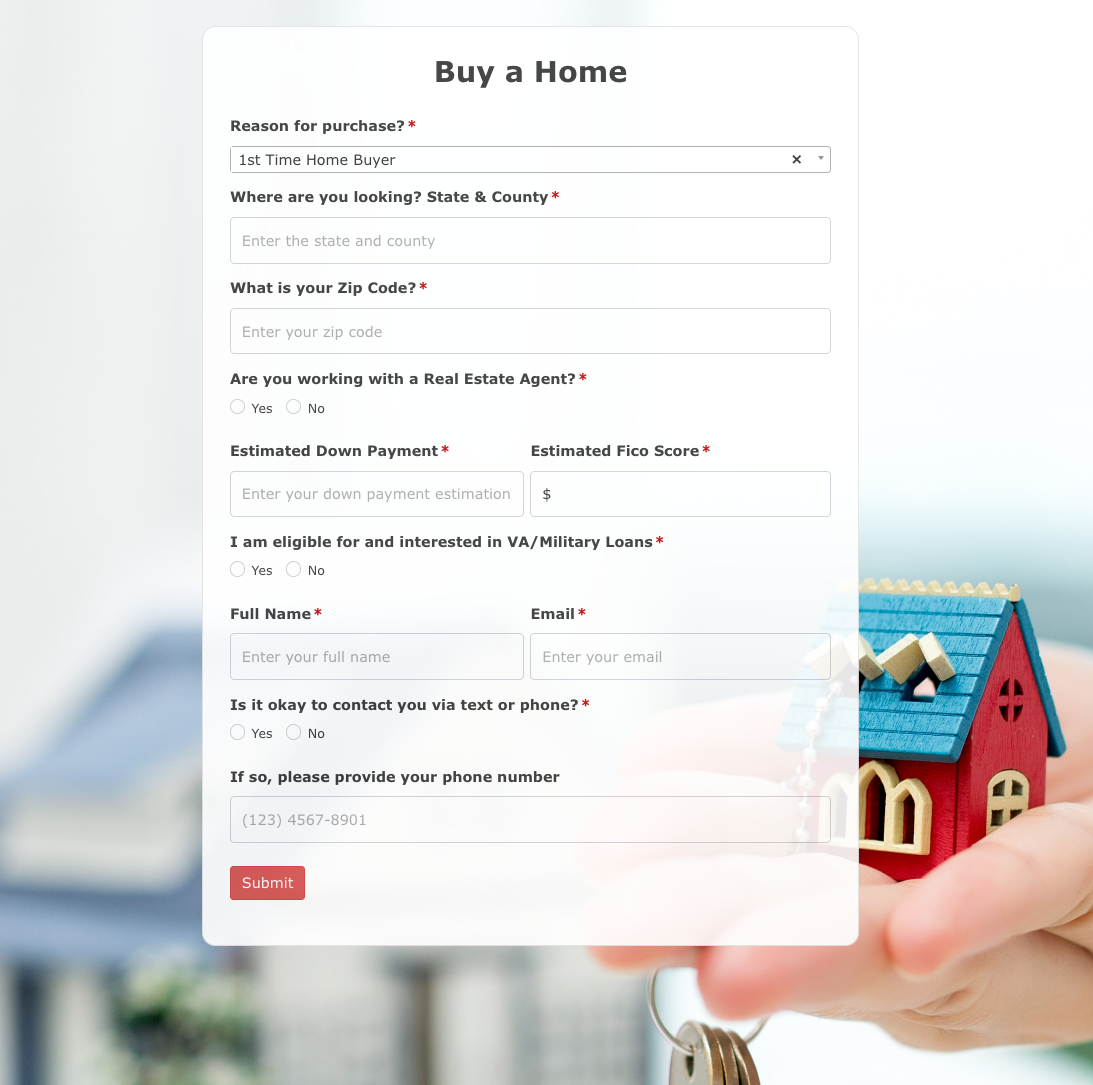 Buy a Home Form
Buy a Home Form
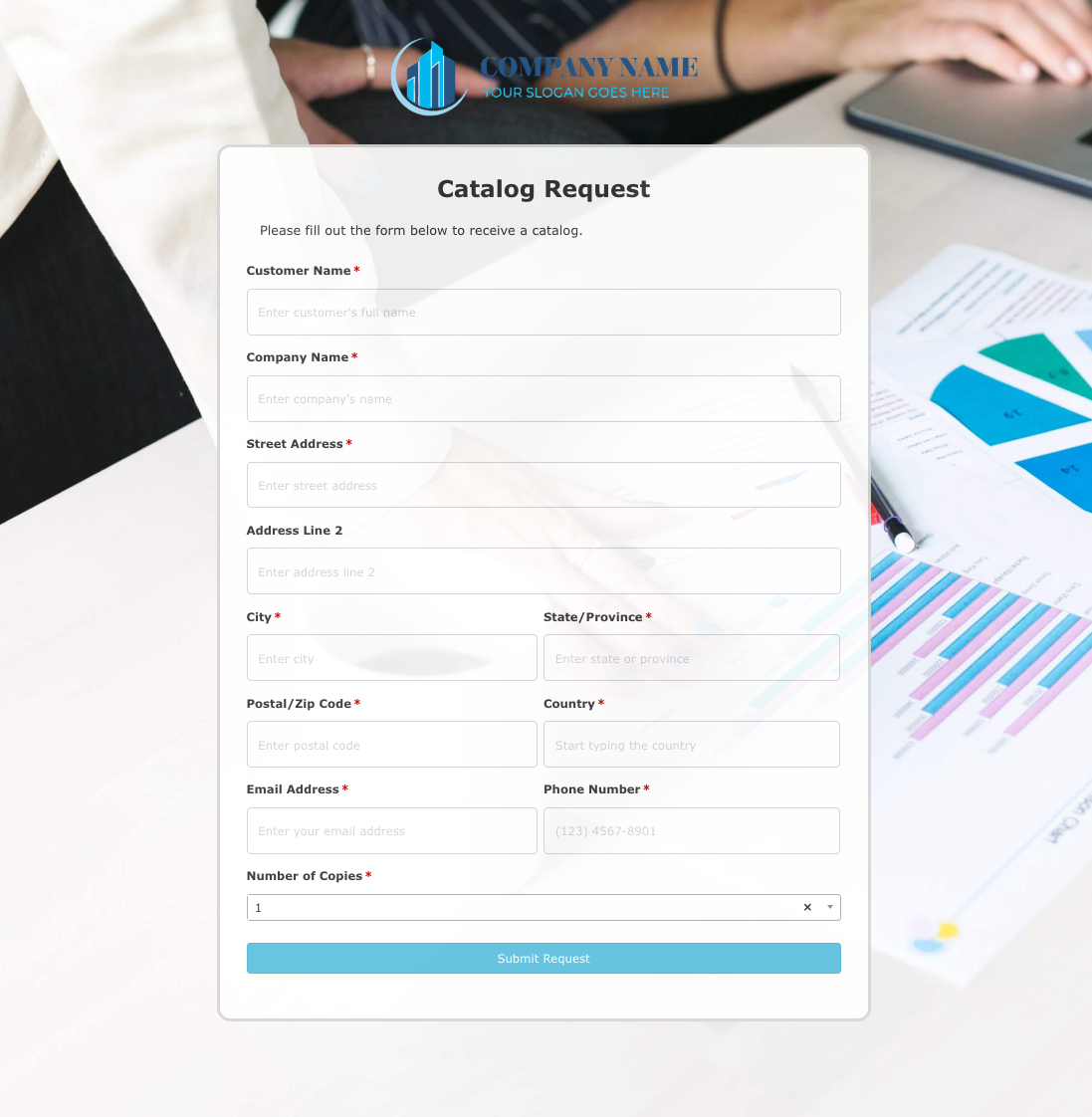 Catalog Request Form
Catalog Request Form
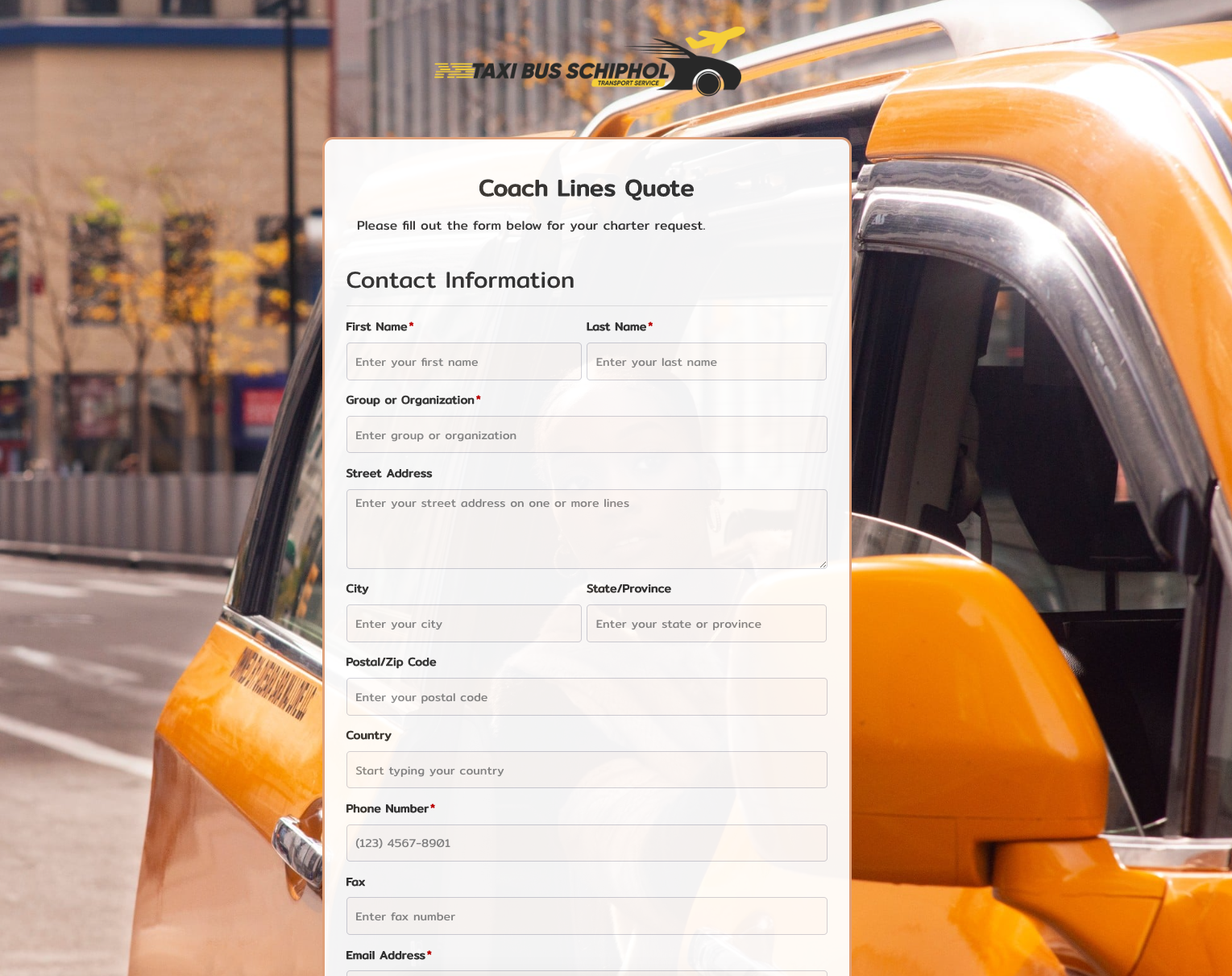 Coach Lines Quote Form
Coach Lines Quote Form
 Contact Us Form
Contact Us Form
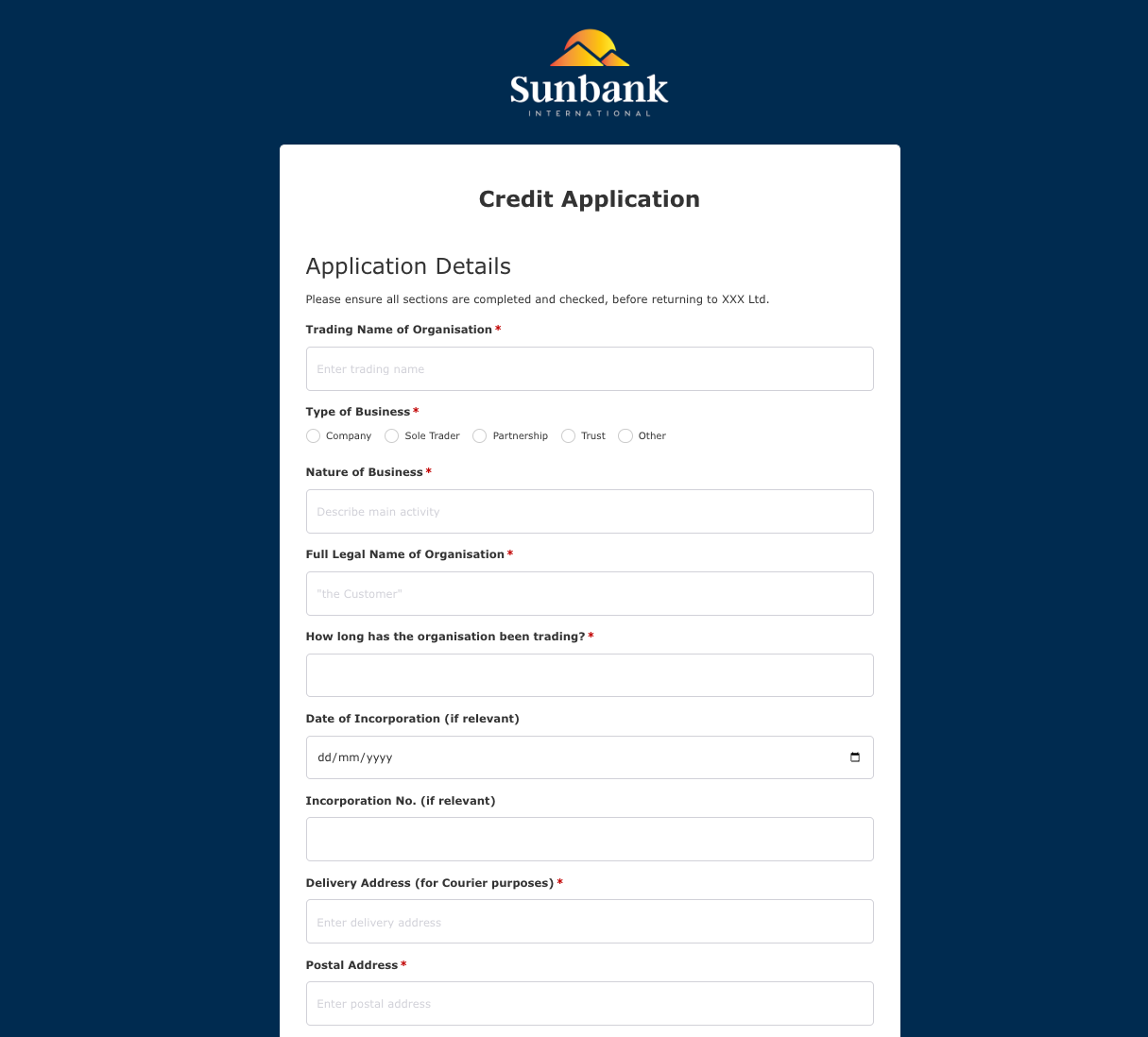 Credit Application Form
Credit Application Form
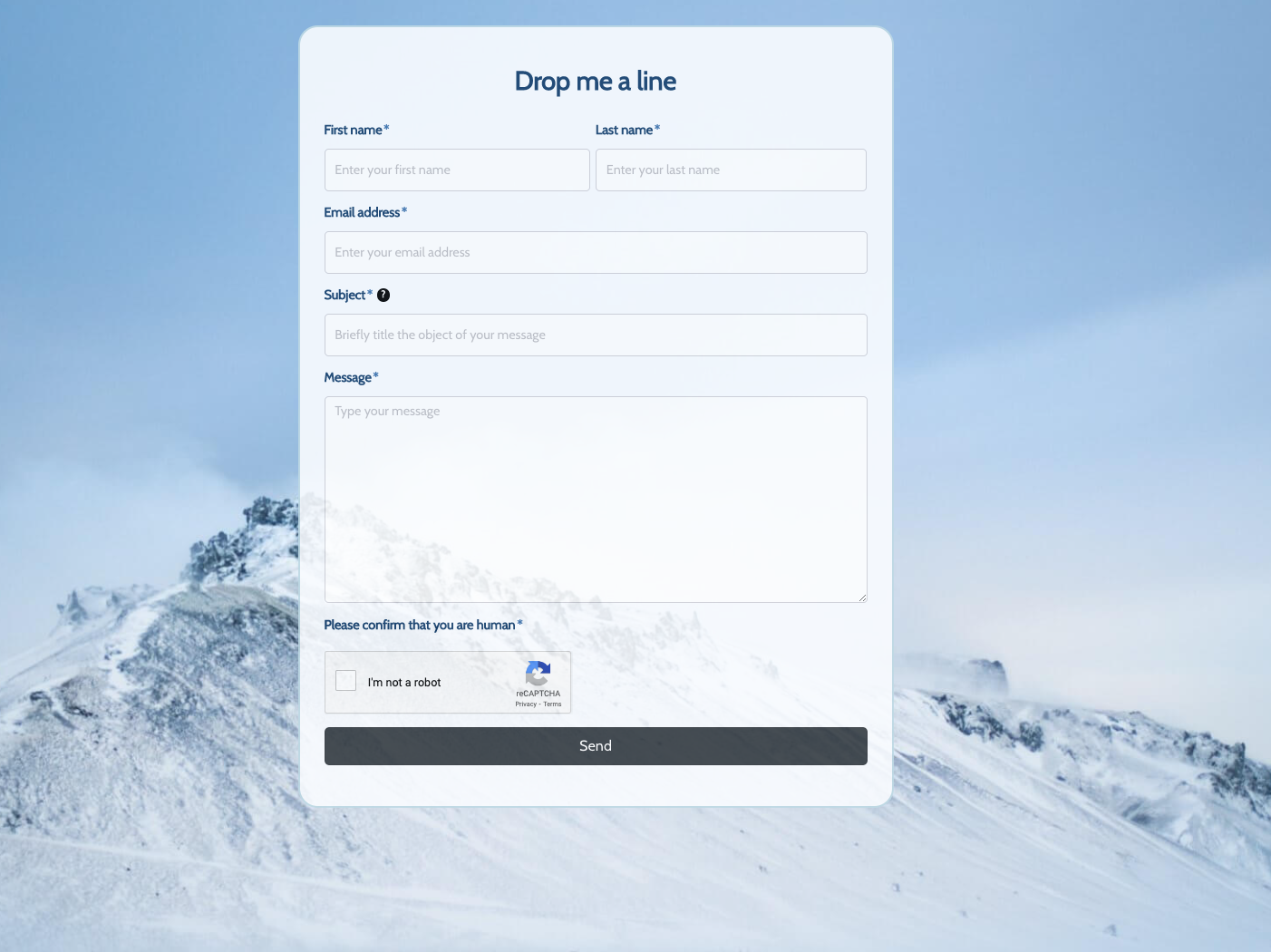 Drop me a line Form
Drop me a line Form
 Enquiry / Feedback Form
Enquiry / Feedback Form
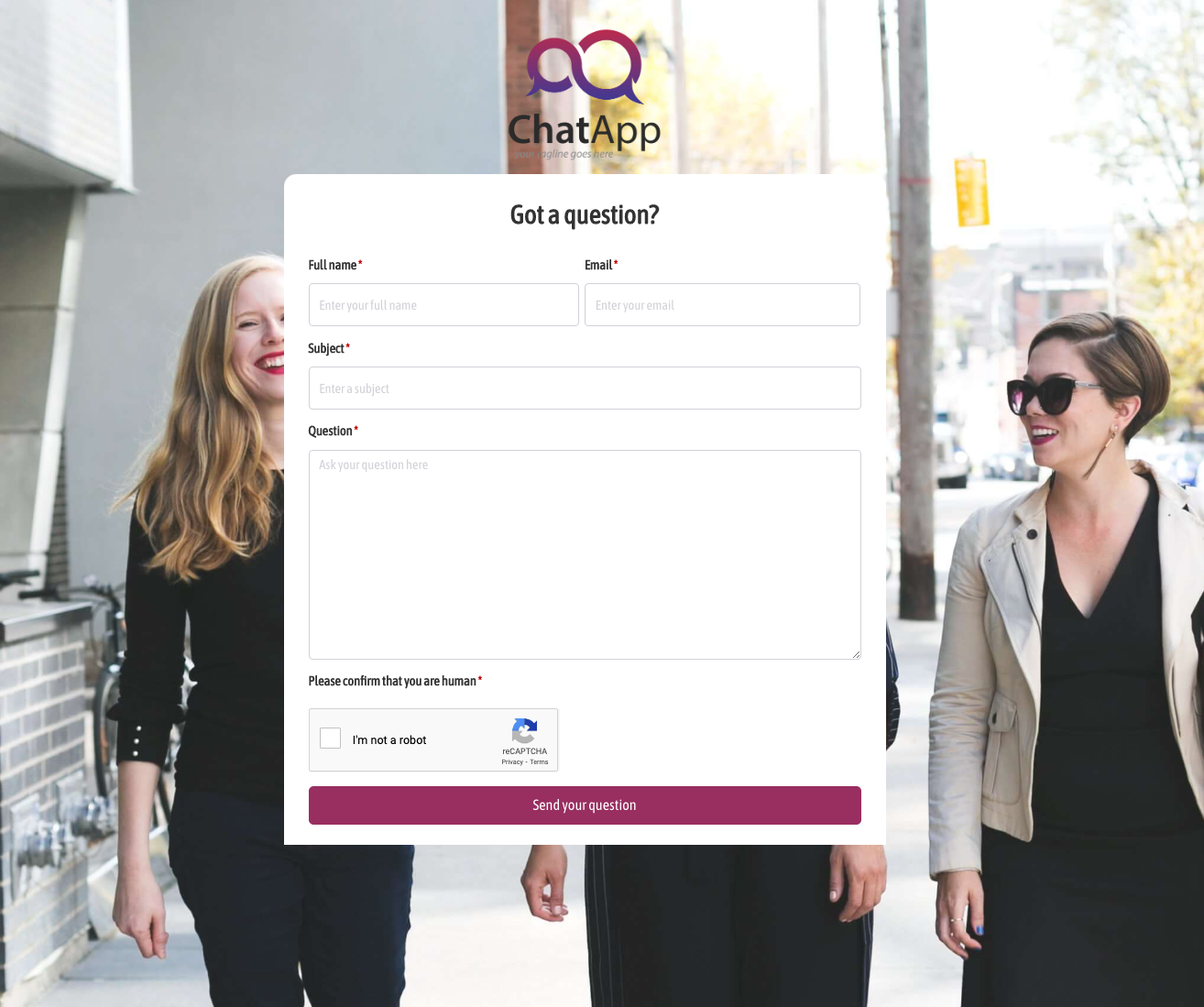 Got a question? Form
Got a question? Form
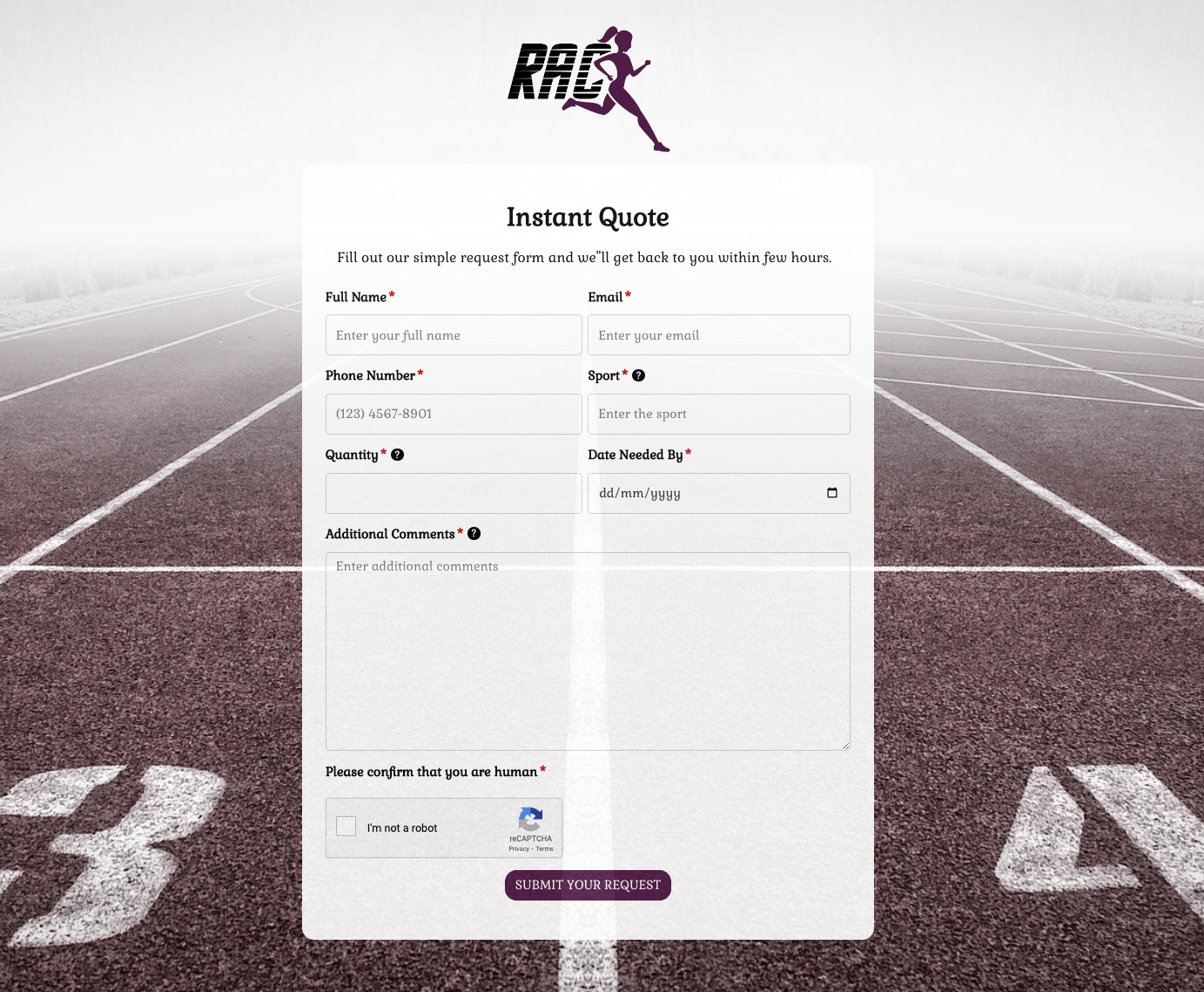 Instant Quote Form
Instant Quote Form
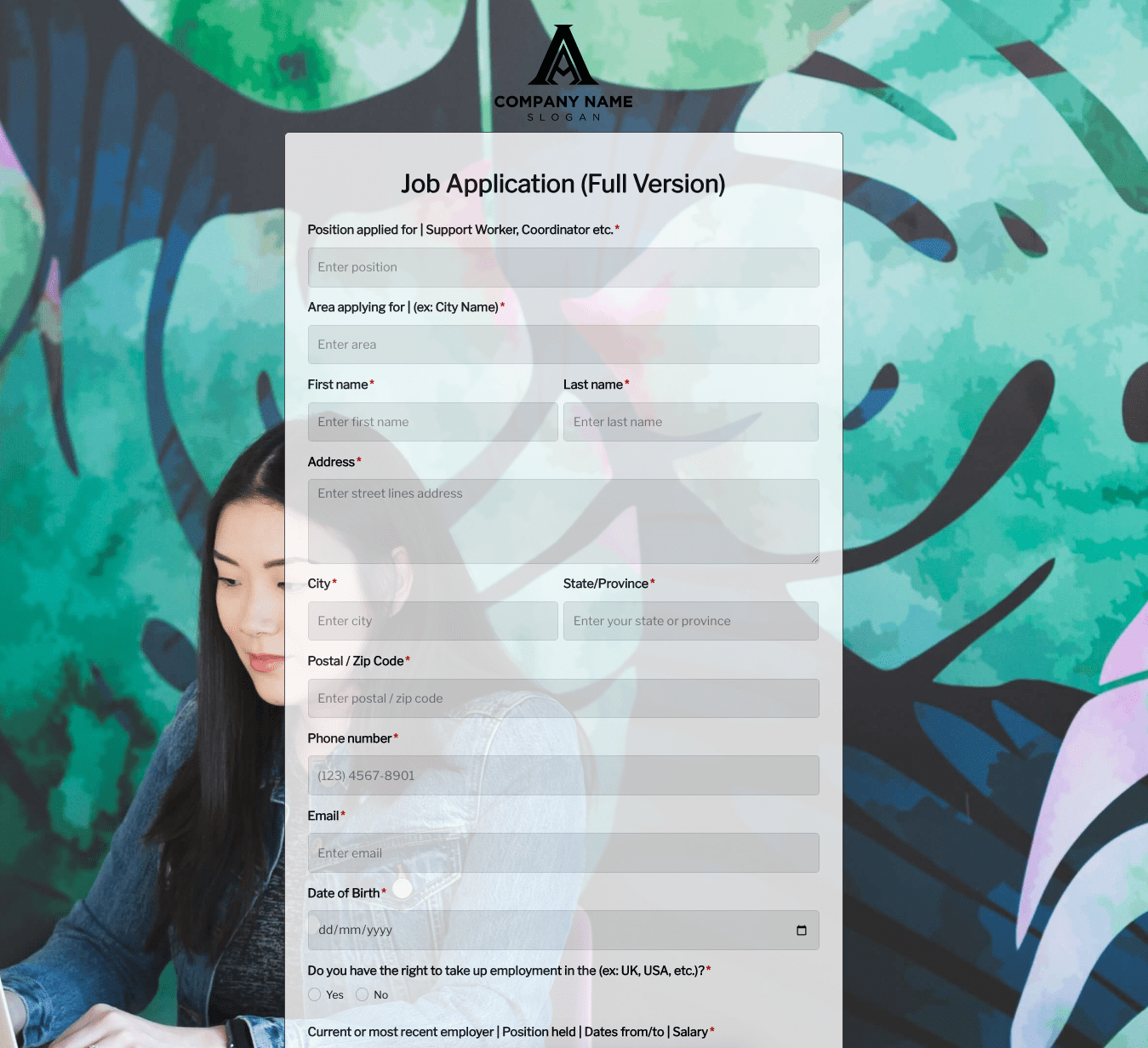 Job Application Form
Job Application Form
 Language & Literacy Lab Form
Language & Literacy Lab Form
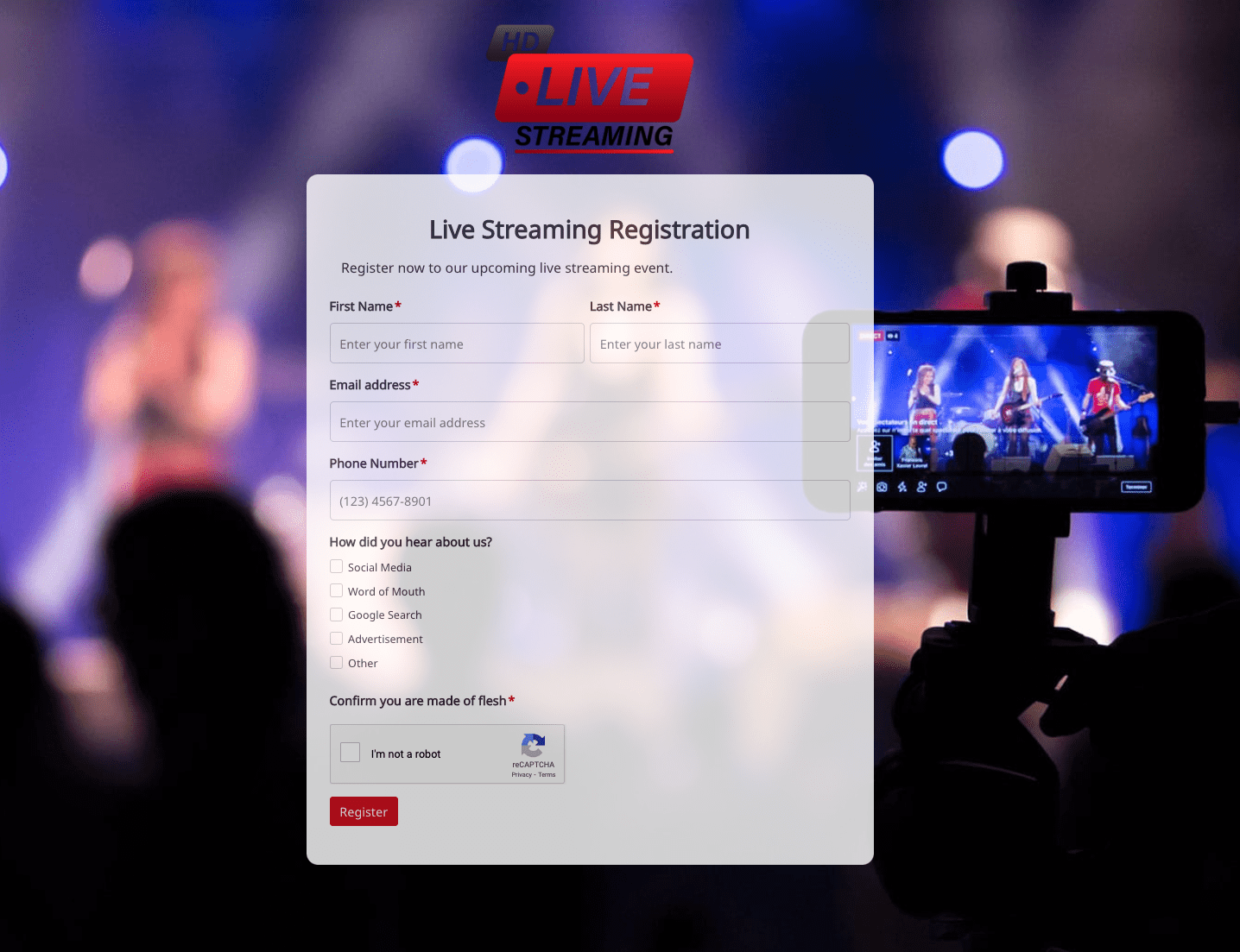 Live Streaming Registration Form
Live Streaming Registration Form
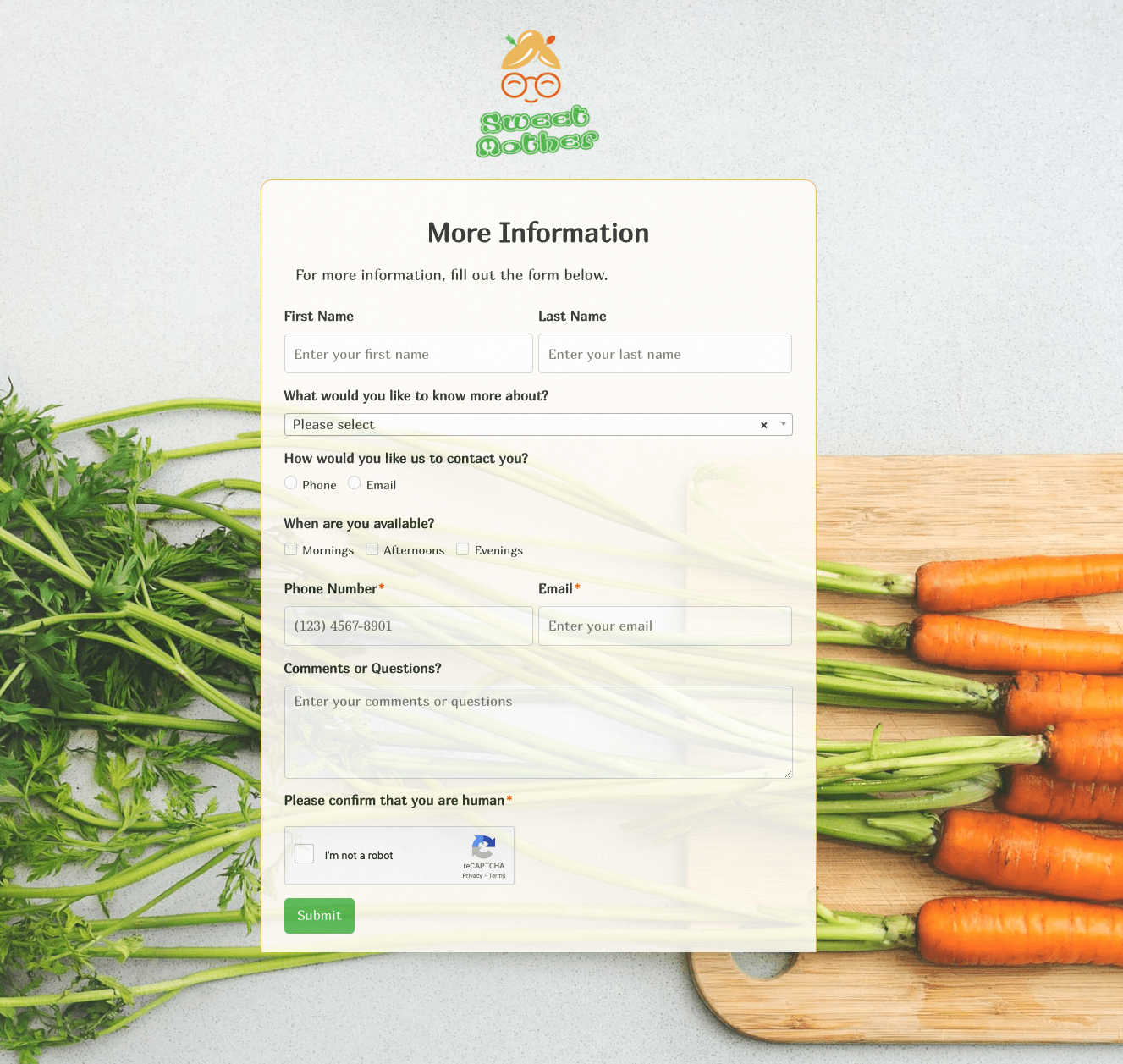 More Information Form
More Information Form
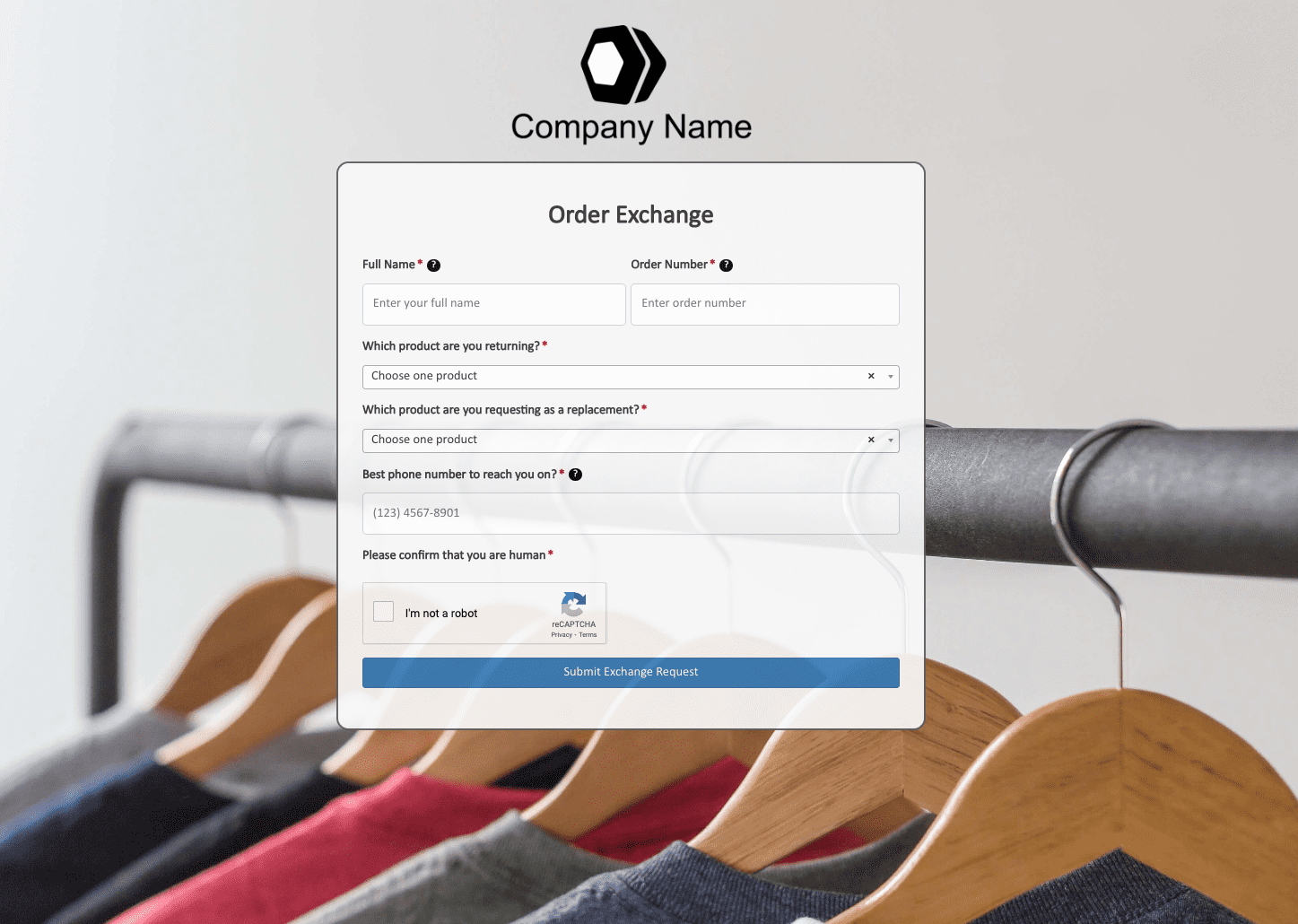 Order Exchange Form
Order Exchange Form
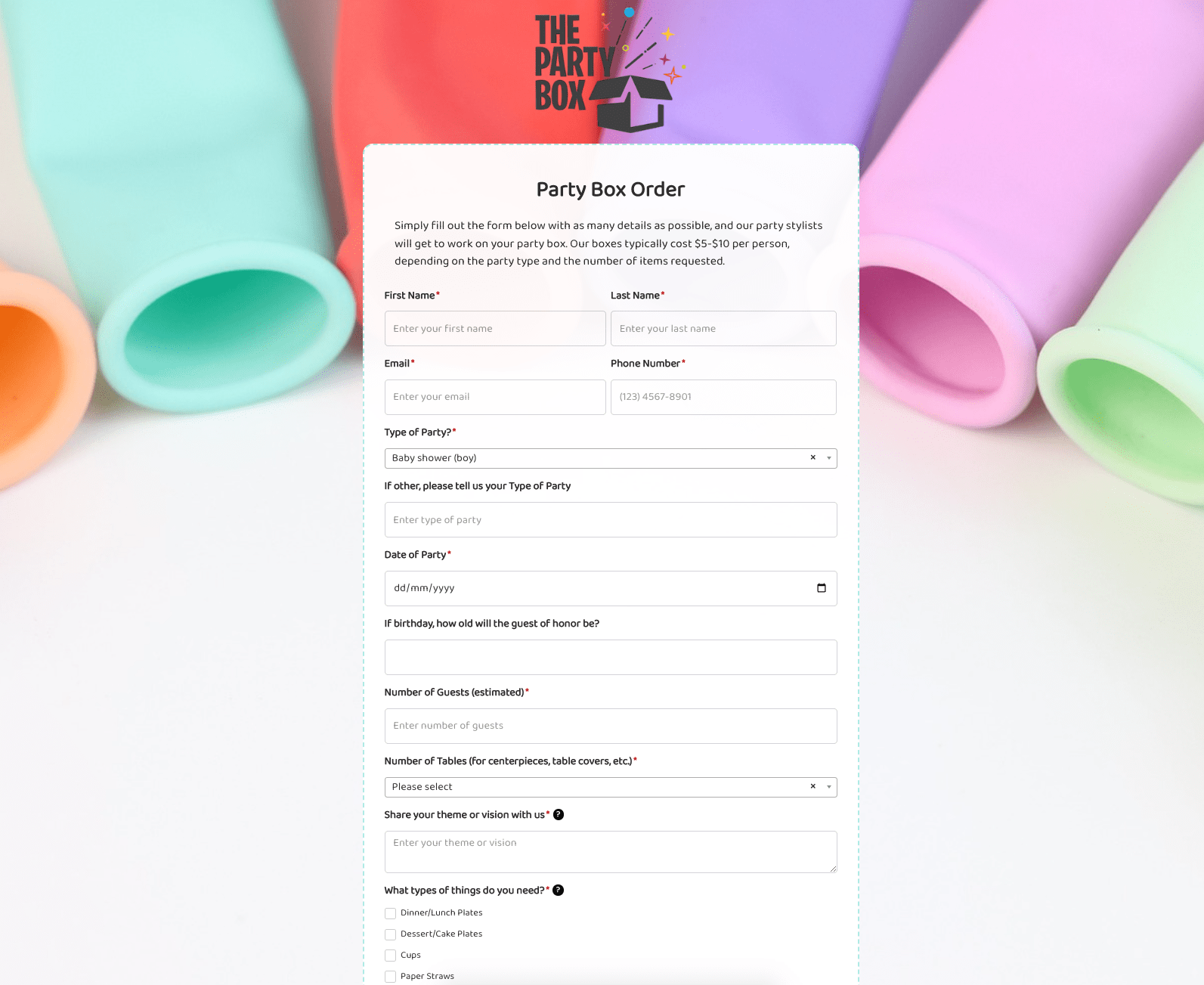 Party Box Order Form
Party Box Order Form
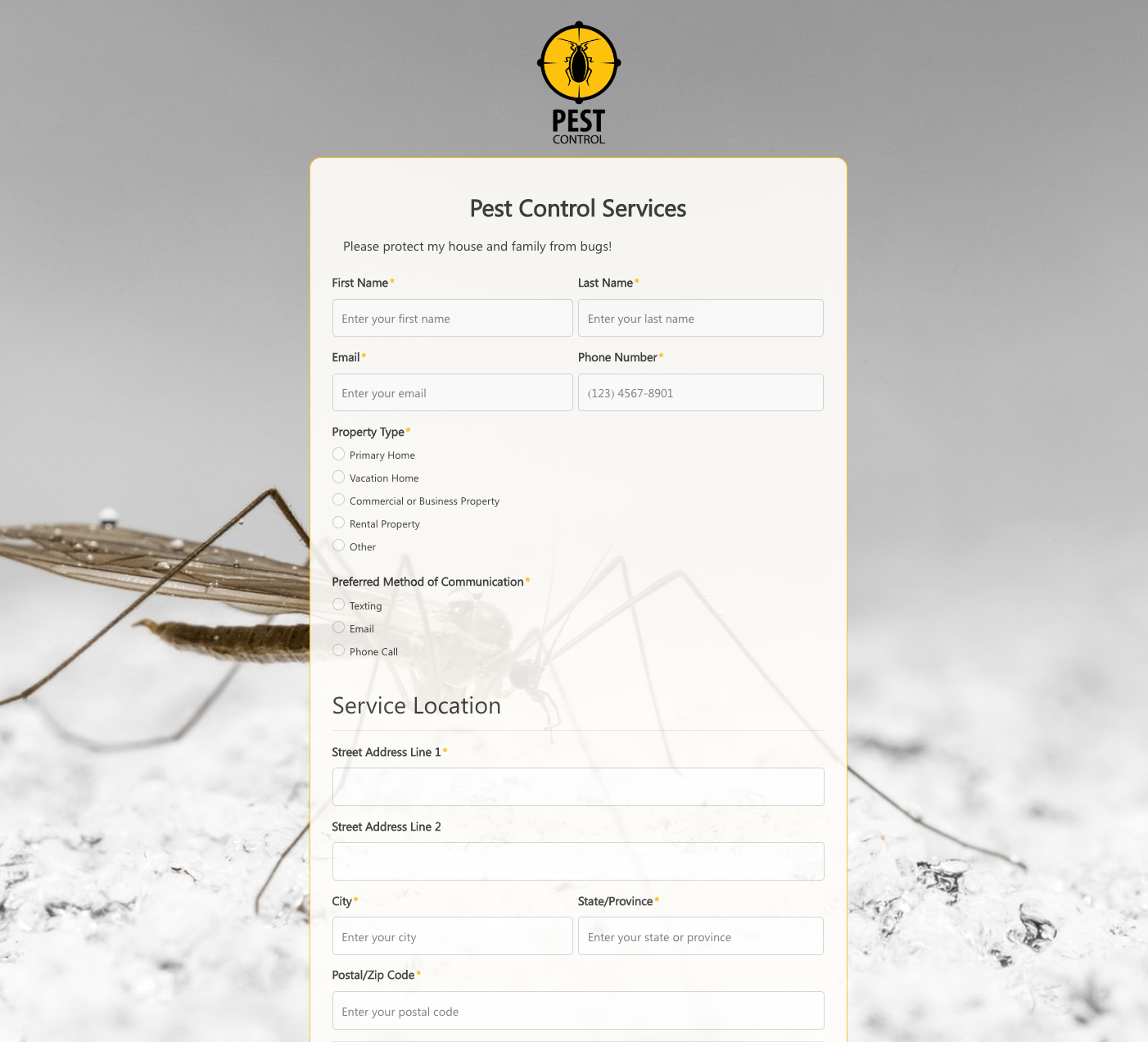 Pest Control Services Form
Pest Control Services Form
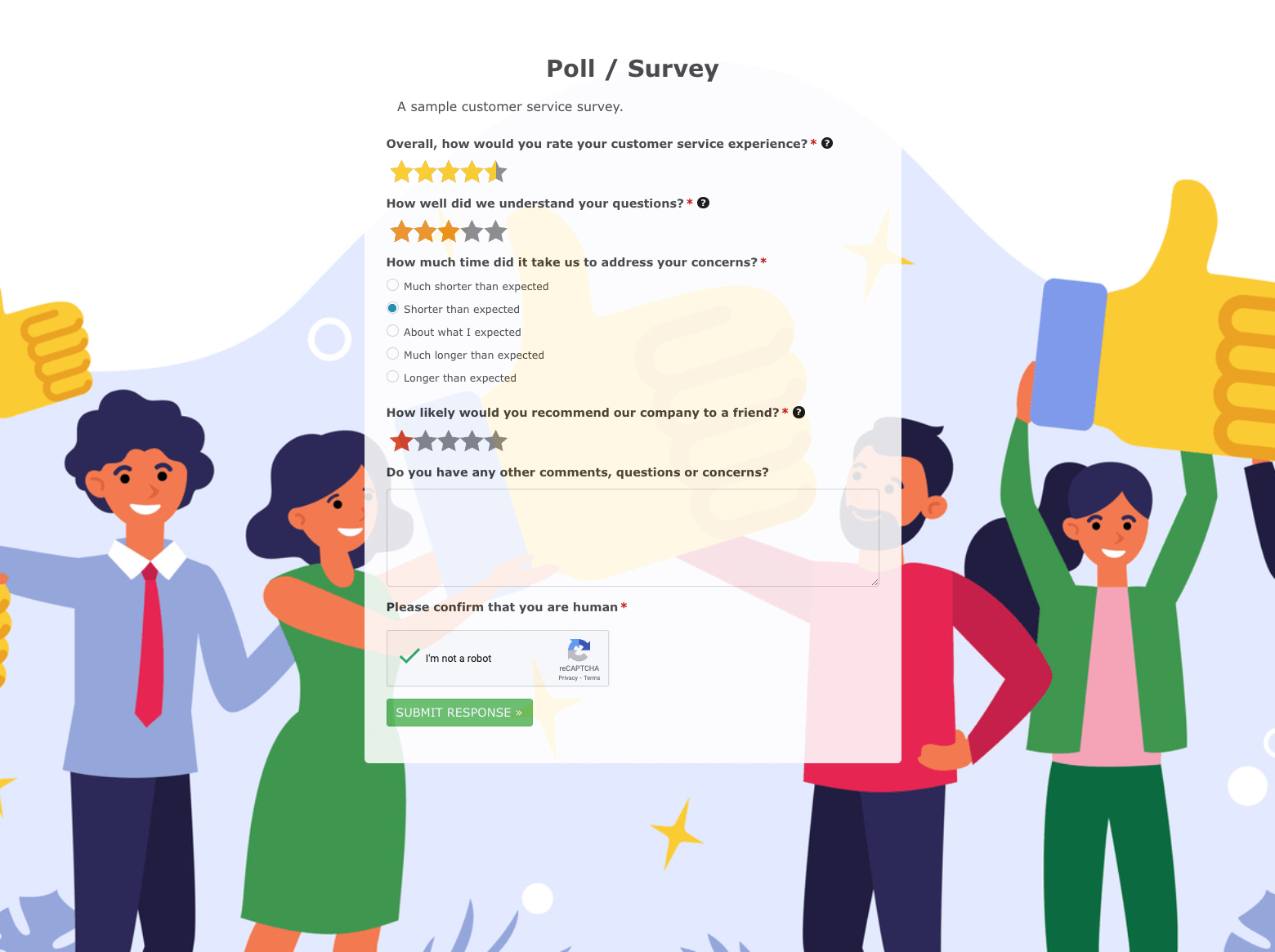 Poll / Survey Form
Poll / Survey Form
 Receive Ebook Form
Receive Ebook Form
 Refinance Mortgage Form
Refinance Mortgage Form
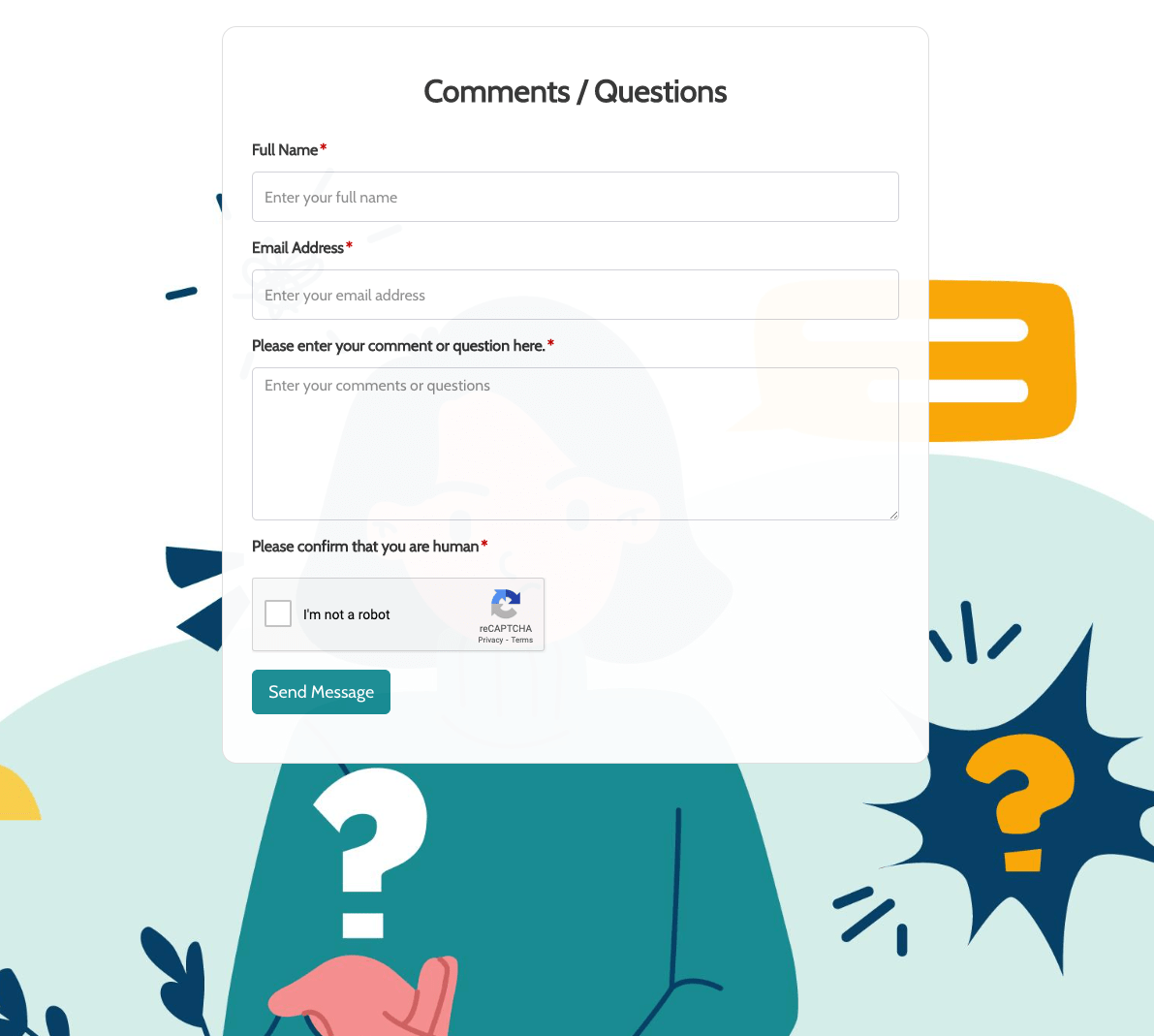 Remarks / Questions Form
Remarks / Questions Form
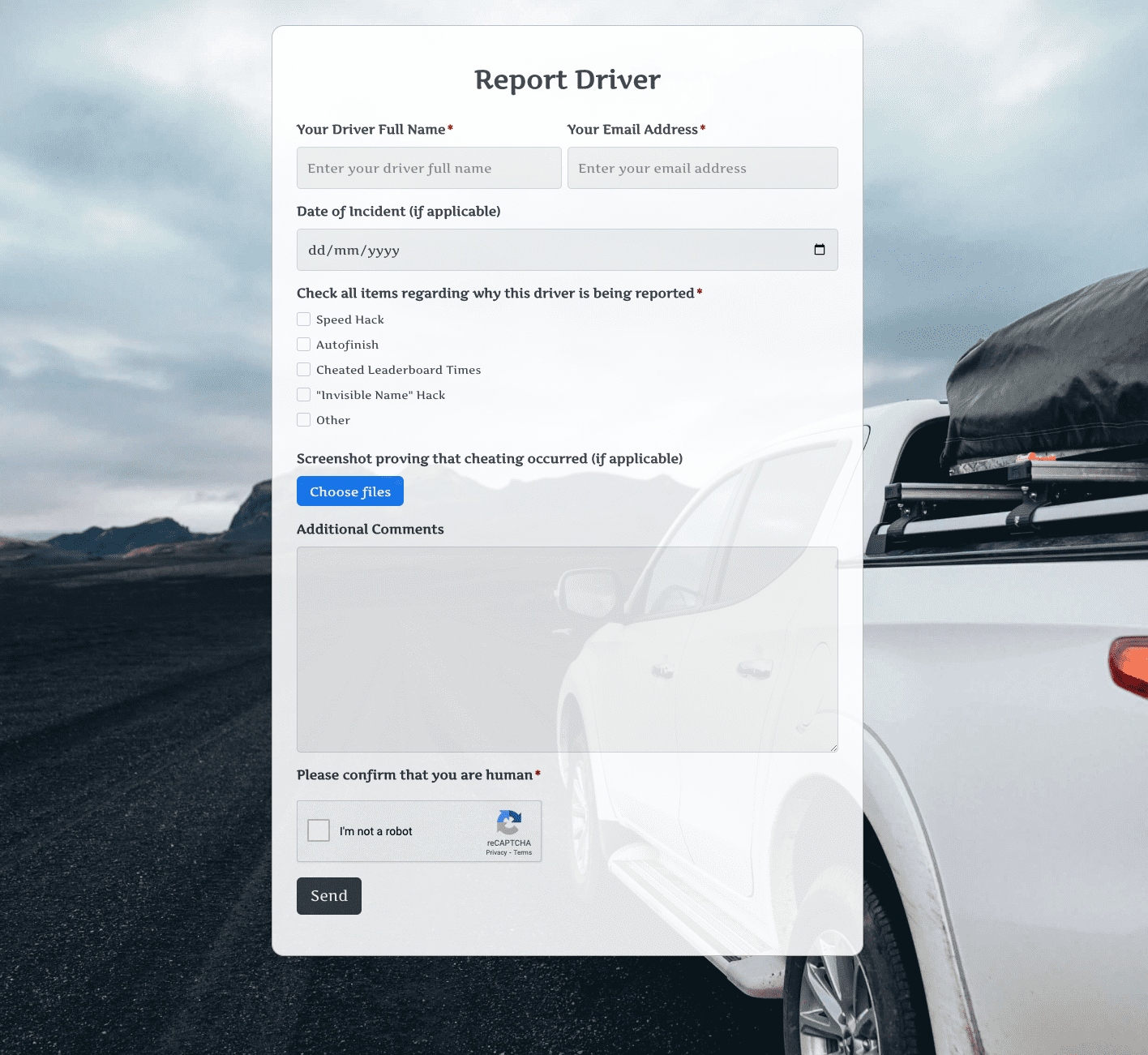 Report Driver Form
Report Driver Form
 Retreat Information Form
Retreat Information Form
 Service Enquiry Form
Service Enquiry Form
 Skydiving Registration Form
Skydiving Registration Form
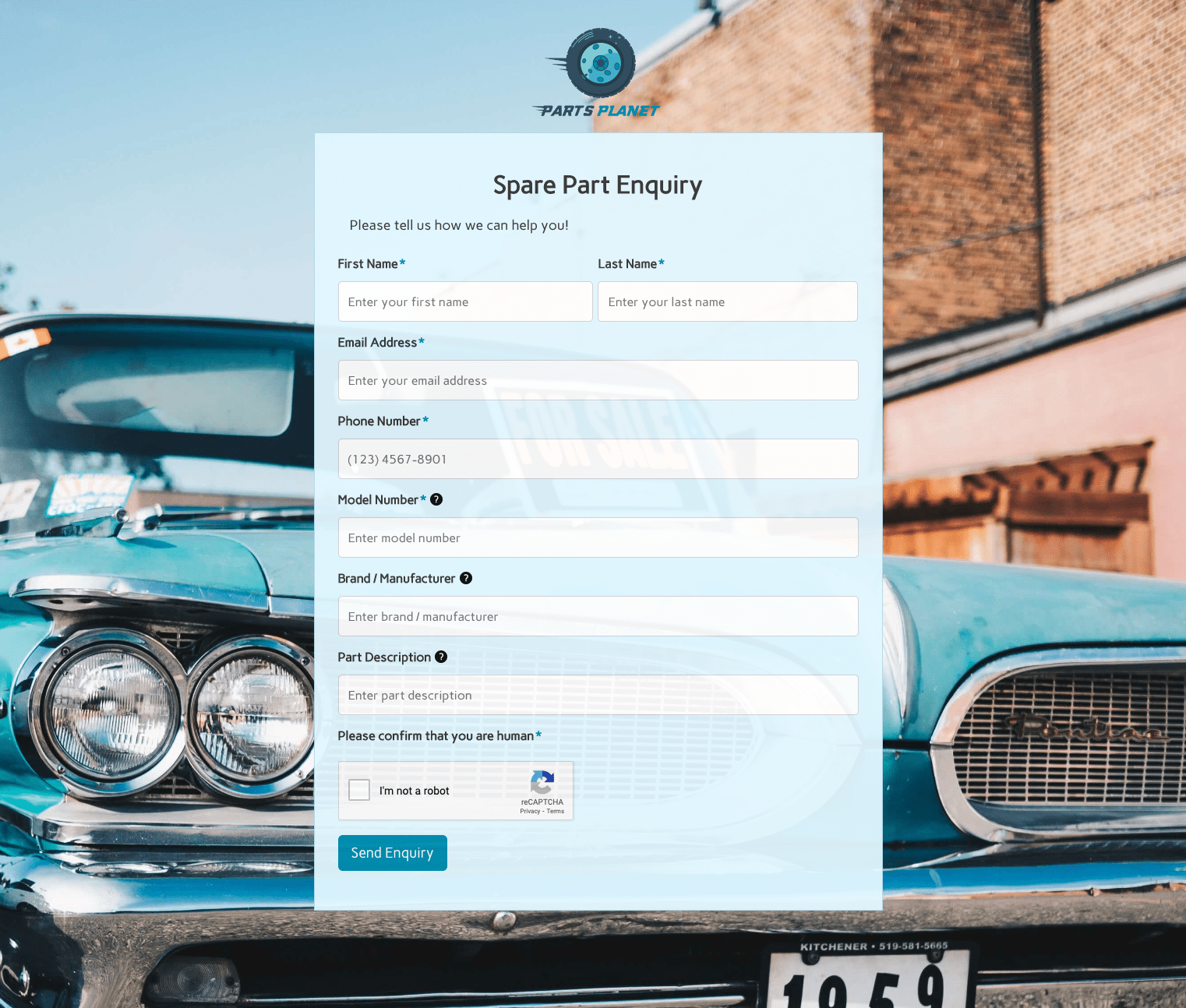 Spare Part Enquiry Form
Spare Part Enquiry Form
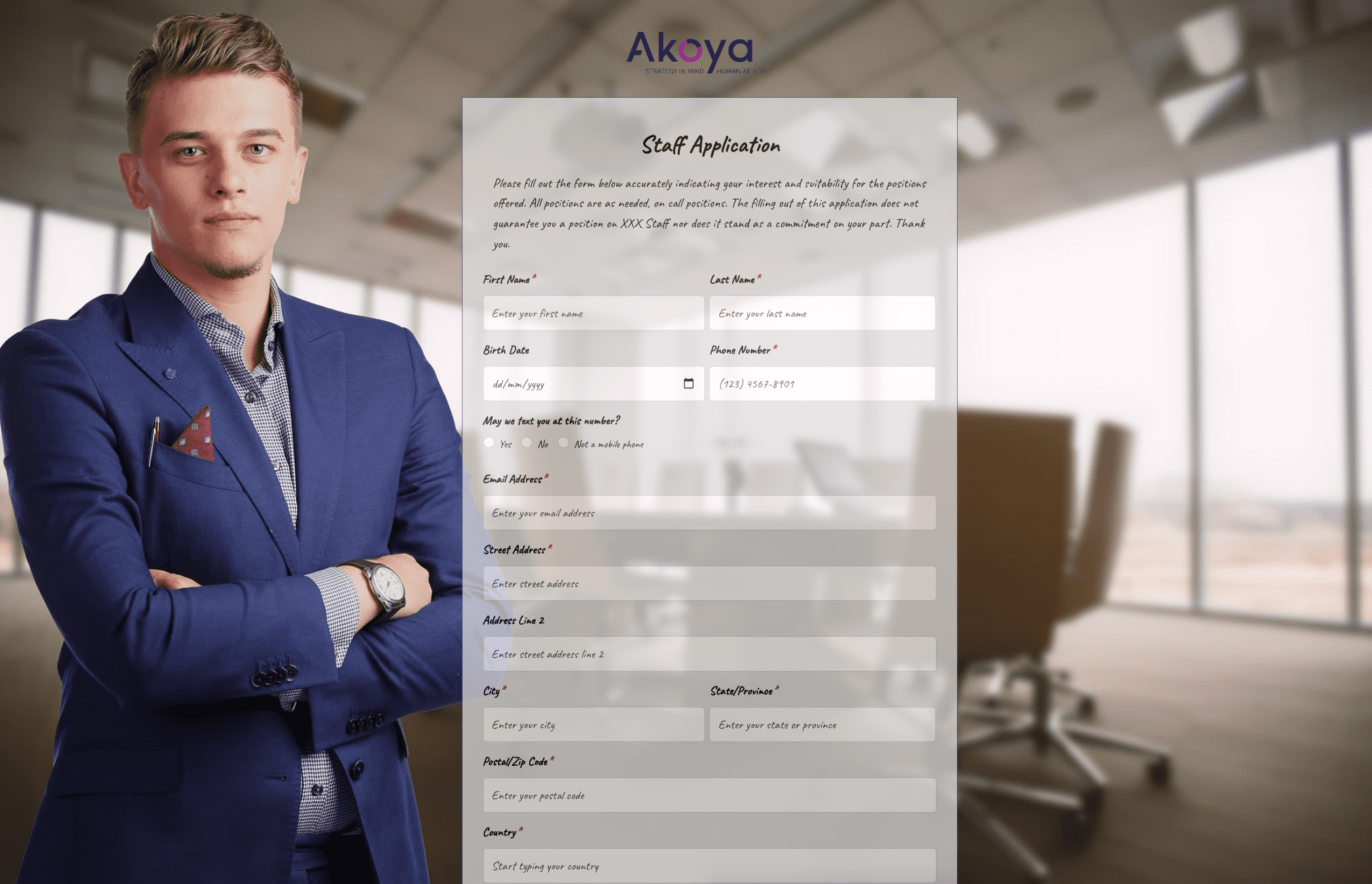 Staff Application Form
Staff Application Form
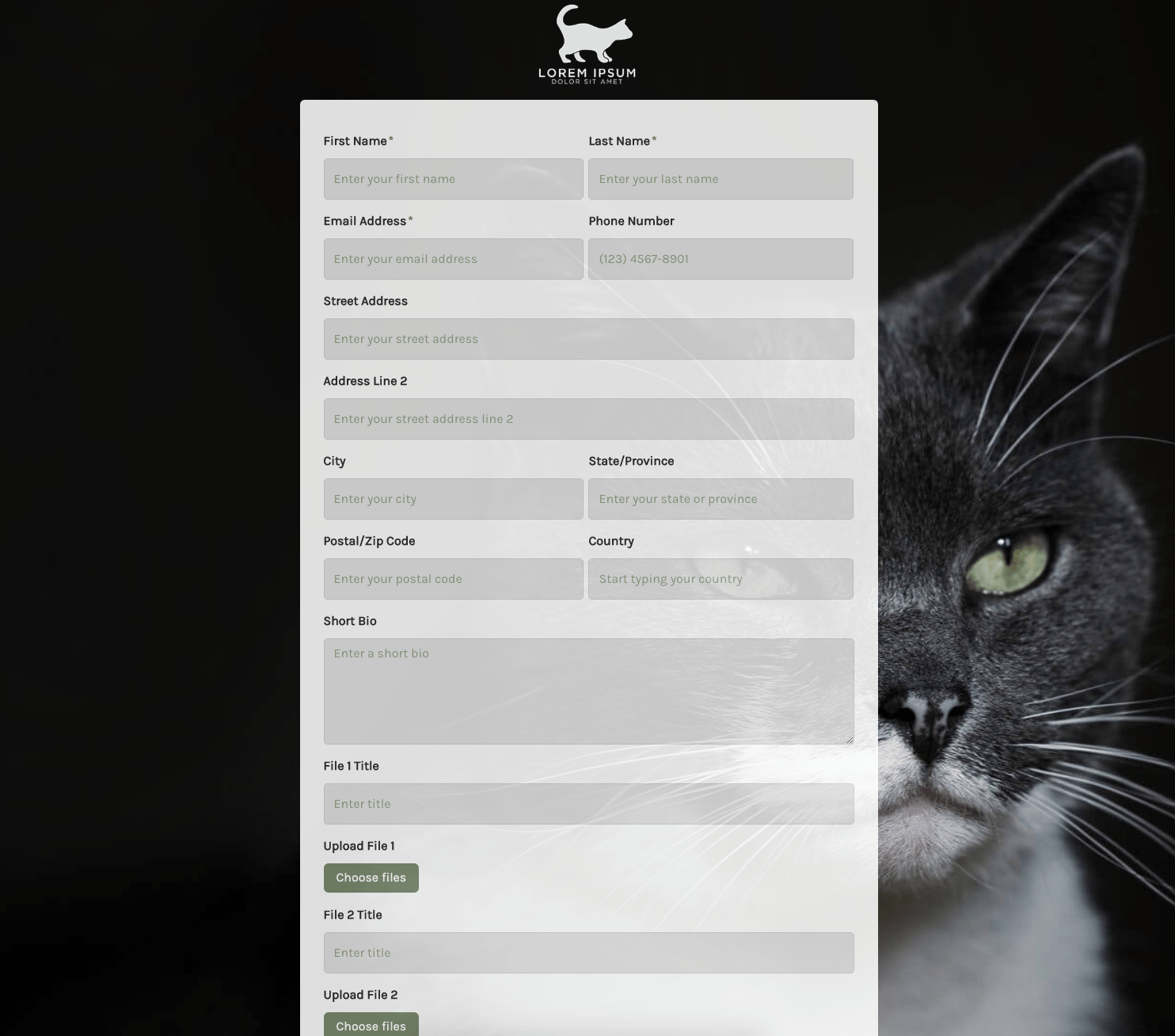 Submission Form
Submission Form
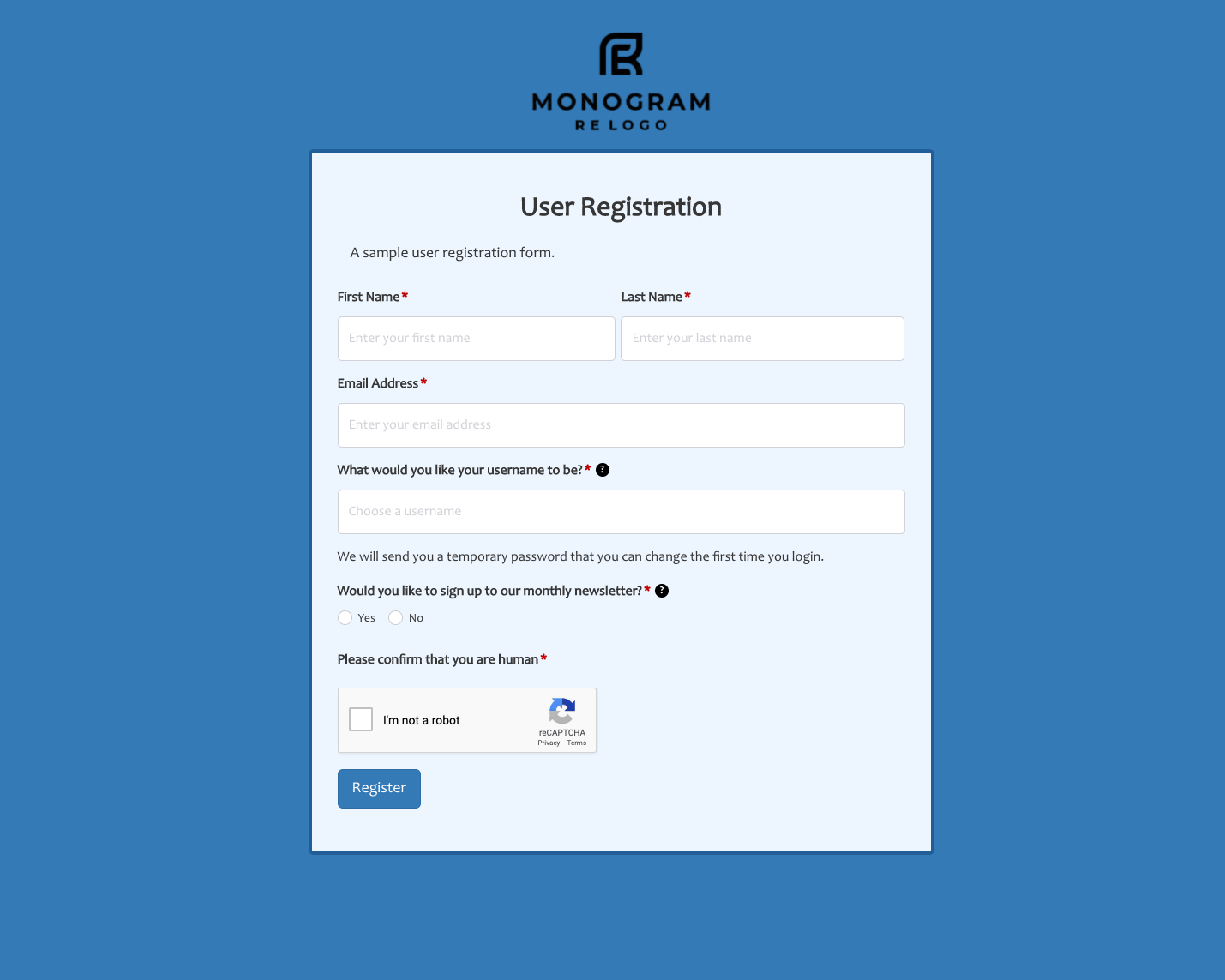 User Registration Form
User Registration Form
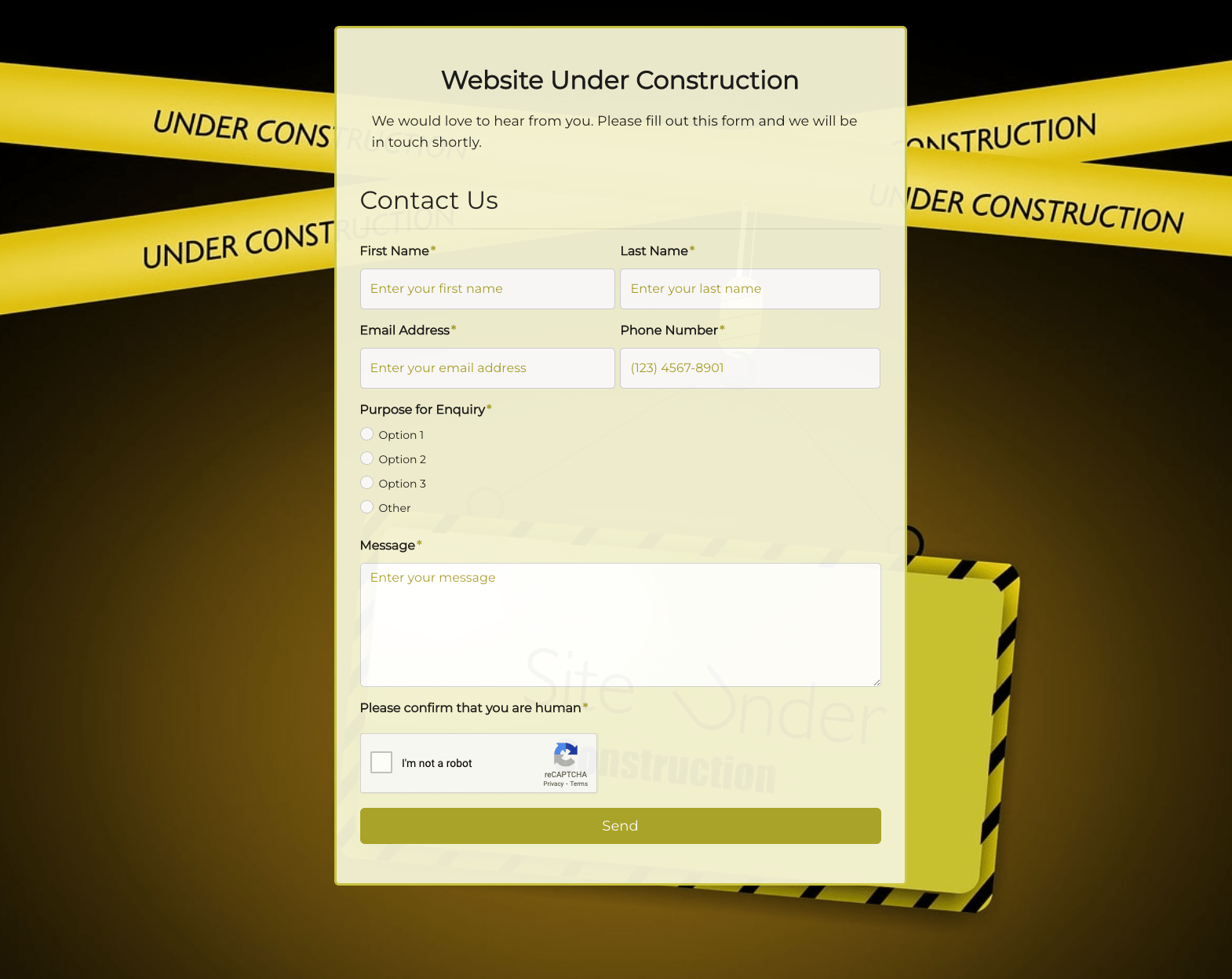 Website Under Construction Form
Website Under Construction Form
 Wedding Photographer Form
Wedding Photographer Form
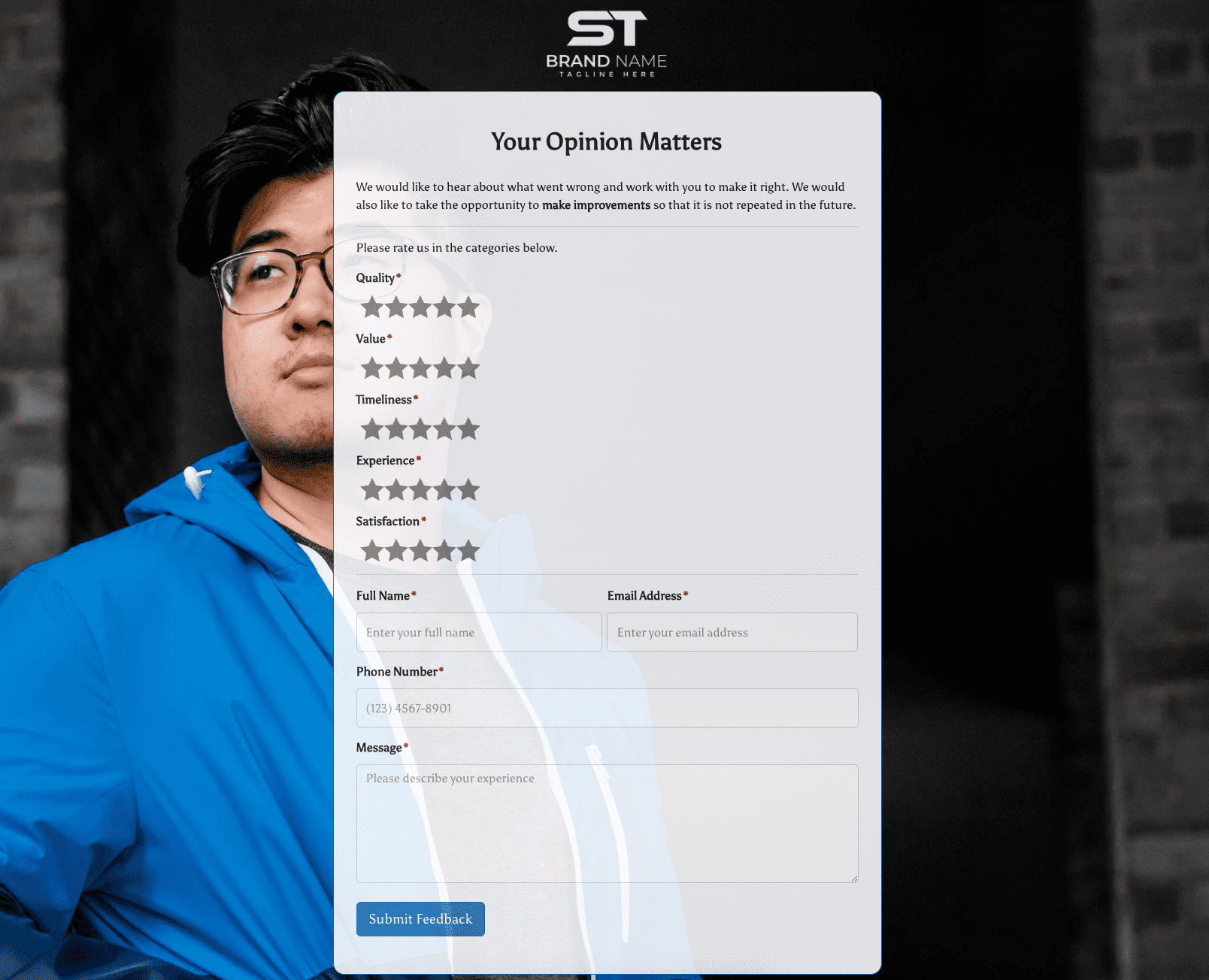 Your Opinion Matters Form
Your Opinion Matters Form
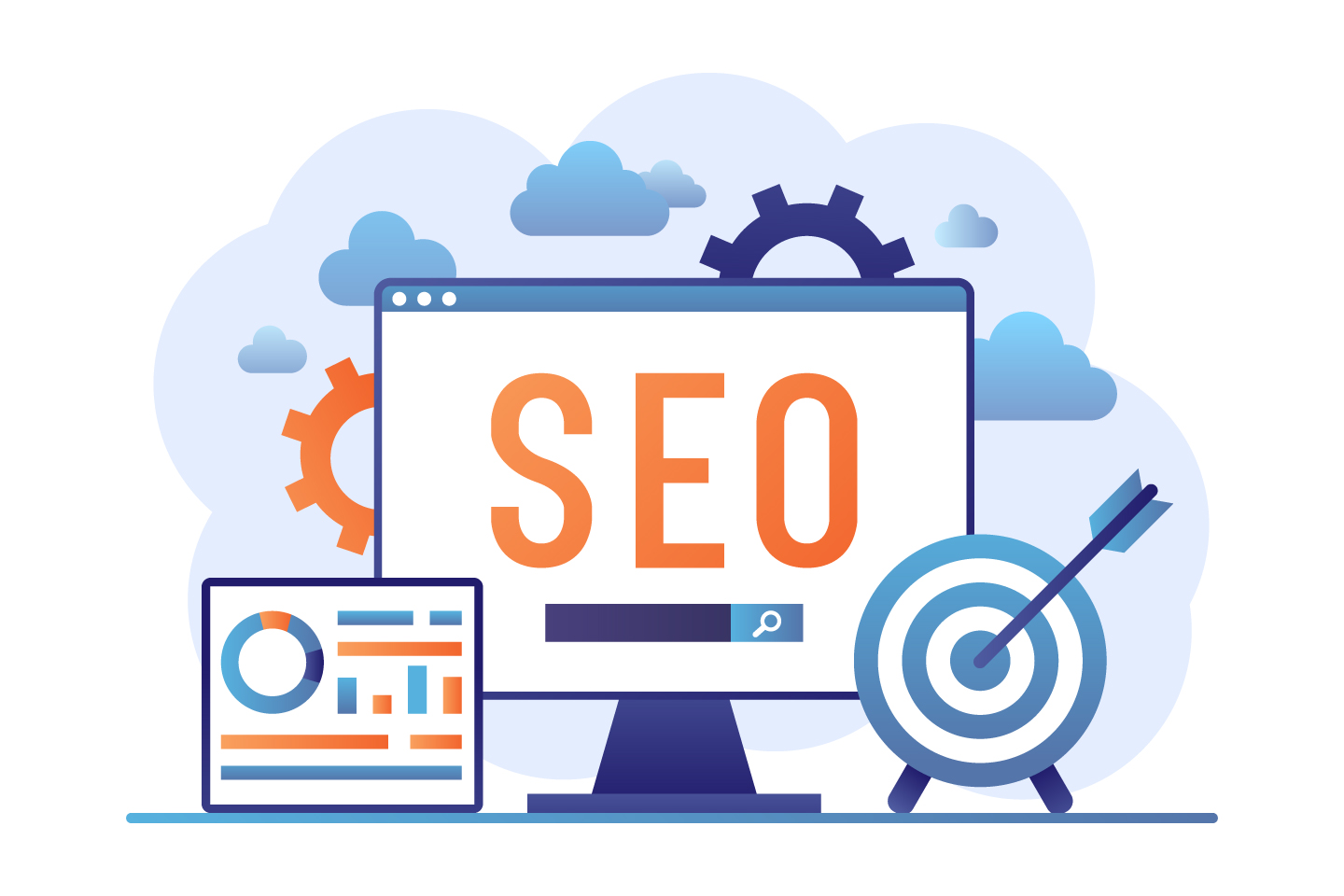






































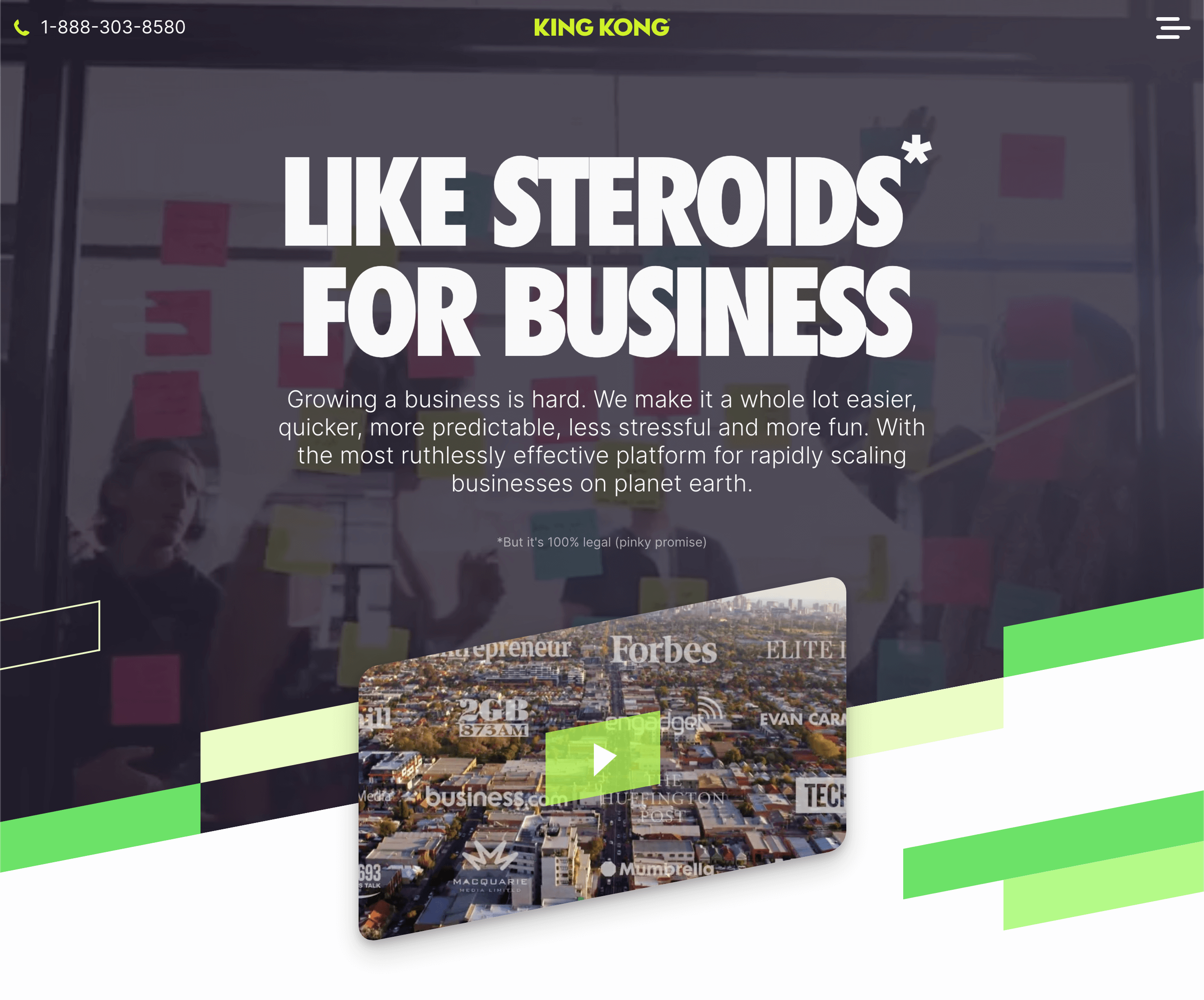
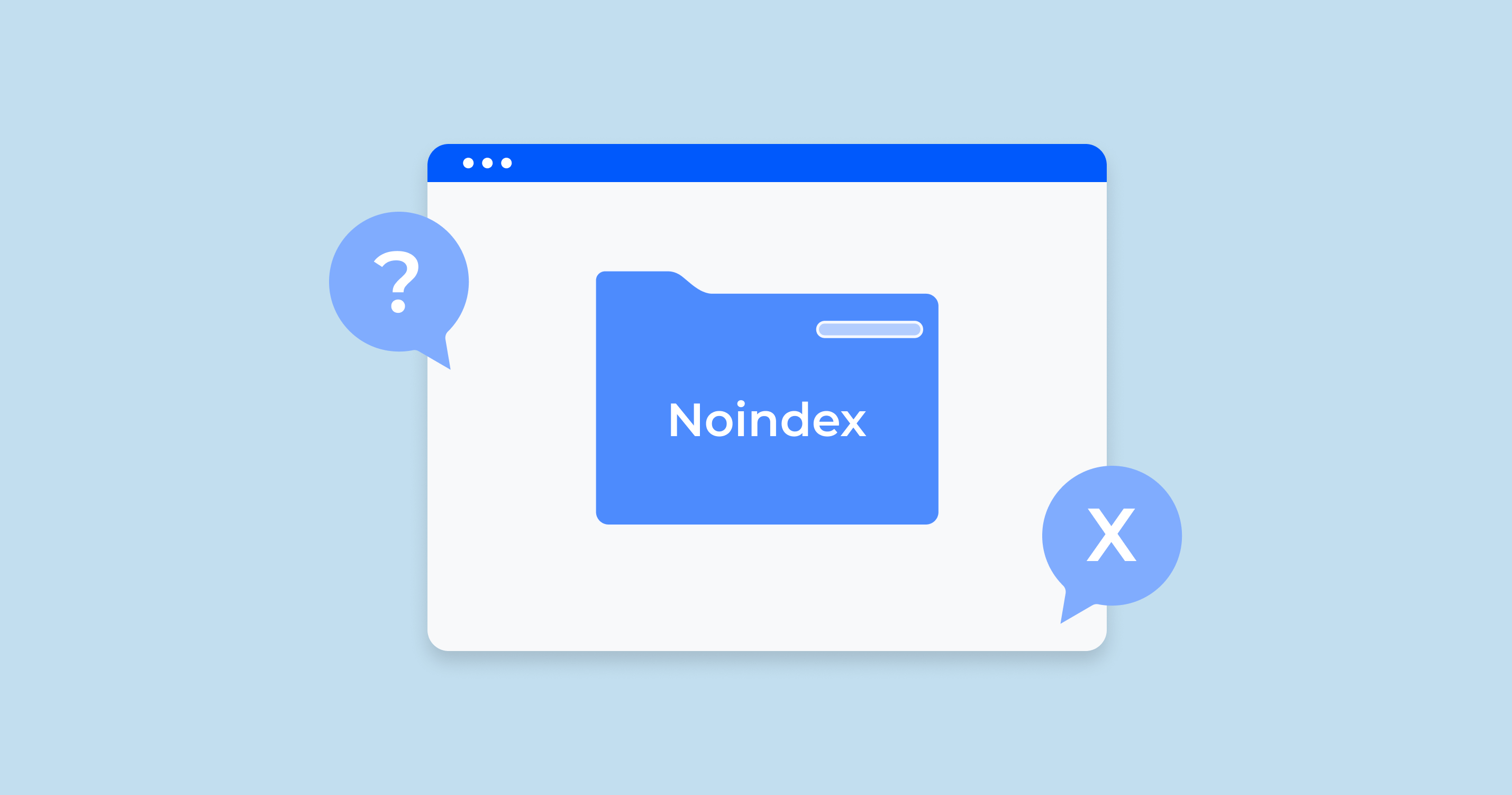



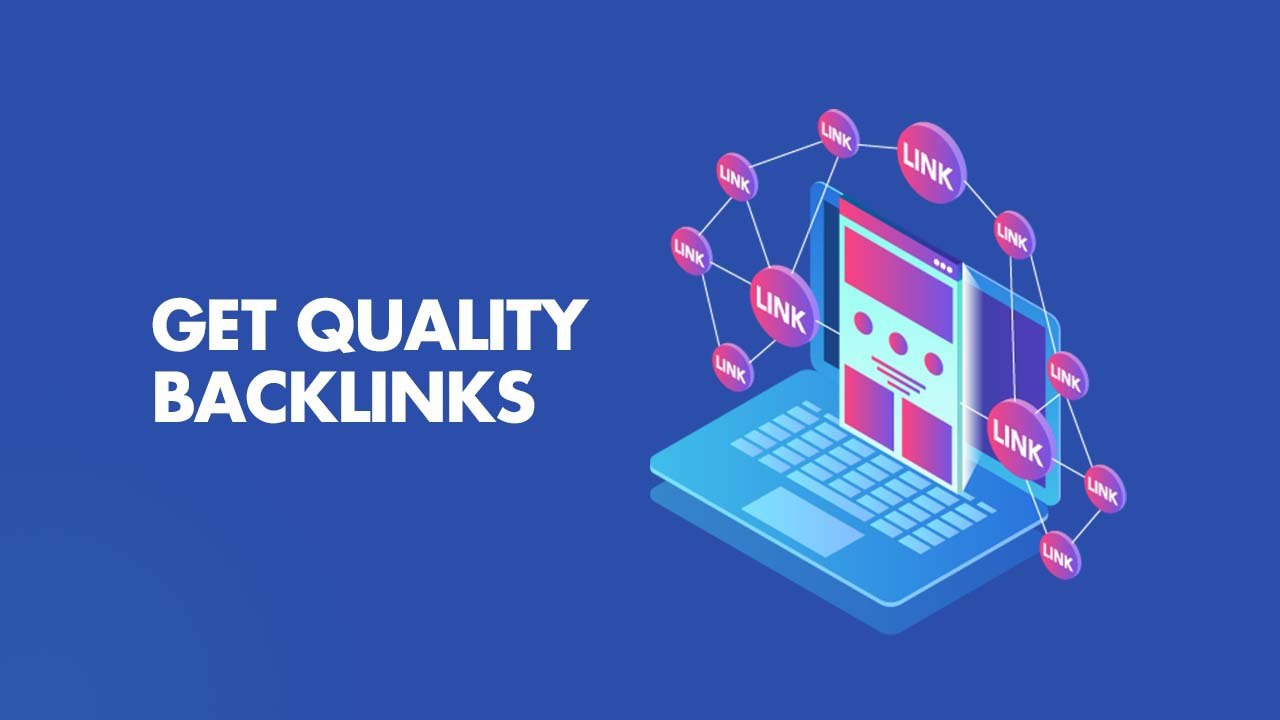
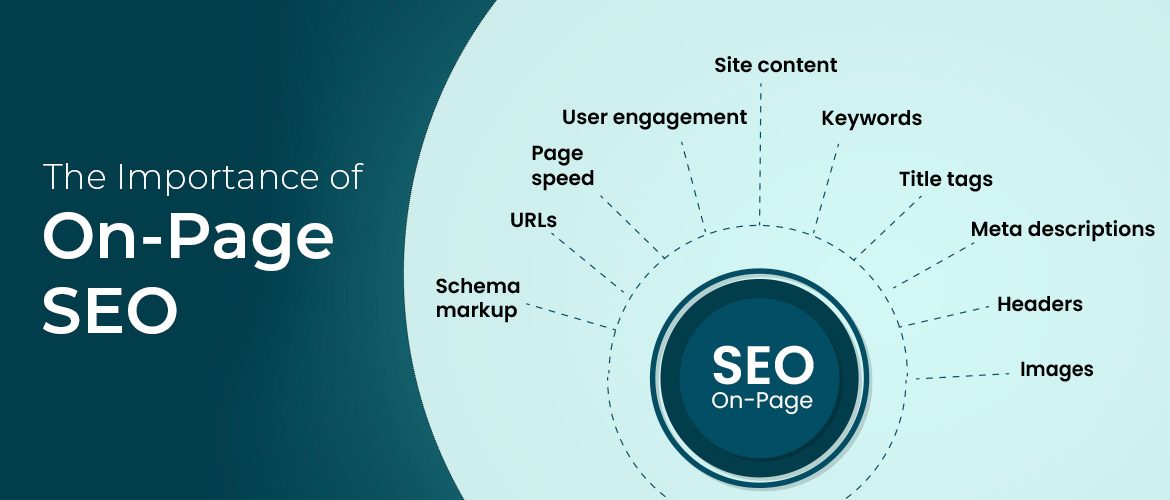





.jpeg)

